This page lists the musicians who have performed songs written by Yuki Kajiura. The musicians are categorized by the instrument they usually play in Yuki’s works.
How to use: Click on an instrument name to take you to the musicians that play it. Musicians under each instrument are listed alphabetically. A “☆” indicates musicians that have played in Yuki’s live events.
Violin | Viola | Cello | Erhu | Electric Guitar | Classical & Acoustic Guitar | Harp | Bass | Drums | Percussion | Flute | Saxophone | Flugel Horn | Bag Pipes | Uillean Pipes | Oboe | Harmonica | Zampona | Accordion | Acoustic Piano | Keyboard
Violin
Eida, Yoshihiko
栄田嘉彦 Birthdate unknown
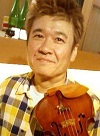 Yoshihiko Eida is a violinist who heads his own strings unit and also plays in several others. He has performed for various artists, such as Kinki Kids, and in various soundtracks, such as the Please Save My Earth OST and the Only Yesterday Image Album. Most of the works he participates in are relatively obscure, however. For Yuki Kajiura, he played violin in the song “Camomile Tea” and the Tokyo Kyoudai OST, both in The Works for Soundtrack.
Yoshihiko Eida is a violinist who heads his own strings unit and also plays in several others. He has performed for various artists, such as Kinki Kids, and in various soundtracks, such as the Please Save My Earth OST and the Only Yesterday Image Album. Most of the works he participates in are relatively obscure, however. For Yuki Kajiura, he played violin in the song “Camomile Tea” and the Tokyo Kyoudai OST, both in The Works for Soundtrack.
Kido, Kiyo
城戸喜代 Birthdate unknown
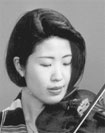 Kido Kiyo is both a violinist and violist. She graduated from Toho Gakuen School of Music. Since college days, she has been active mainly in chamber music, also as a solo player, regardless of genre. She is also active in contemporary music, and has appeared in many concerts including “Contemporary Music Series” by Suntory Music Foundation and “Quartet and Their Friends” by Zen-on. In 1994, she was sent by Japan Foundation to various cities in China as the violist of Shinozaki Isako Quartet and have received the Competition Committee’s Special Award in the composition category of the 68th Music Competition of Japan in 1999. Her violin can be heard in Yuki Kajiura’s Tsubasa Chronicle Future Soundscapes II-IV, Mai Otome OST 1 and 2, Kalafina’s ARIA, and Kara no Kyoukai OST 5-6. She is still playing for Yuki recently, in Kalafina music and OSTs such as Achilles to Kame and Puella Magi Madoka Magica.
Kido Kiyo is both a violinist and violist. She graduated from Toho Gakuen School of Music. Since college days, she has been active mainly in chamber music, also as a solo player, regardless of genre. She is also active in contemporary music, and has appeared in many concerts including “Contemporary Music Series” by Suntory Music Foundation and “Quartet and Their Friends” by Zen-on. In 1994, she was sent by Japan Foundation to various cities in China as the violist of Shinozaki Isako Quartet and have received the Competition Committee’s Special Award in the composition category of the 68th Music Competition of Japan in 1999. Her violin can be heard in Yuki Kajiura’s Tsubasa Chronicle Future Soundscapes II-IV, Mai Otome OST 1 and 2, Kalafina’s ARIA, and Kara no Kyoukai OST 5-6. She is still playing for Yuki recently, in Kalafina music and OSTs such as Achilles to Kame and Puella Magi Madoka Magica.
Konno, Hitoshi ☆
今野均 Birthdate unknown
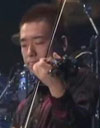 Hitoshi Konno is a violin player. He began playing violin from the age of 5. He started stage appearances and recordings while he was attending the Tokyo Music University. After graduating he participated in various artists’ stage supports, movies, and dramas. In recent years his activities broadened to live performances overseas, song arrangements, and soundtrack producing. He played music in Utakata, Vampire Knight, Darwin ga kita! Soundtrack, Nobita and the Legend of the Green Giant, MOONLIGHT MILE (TV series), and Bakumatsu Kikansetsu Irohanihoheto.
Hitoshi Konno is a violin player. He began playing violin from the age of 5. He started stage appearances and recordings while he was attending the Tokyo Music University. After graduating he participated in various artists’ stage supports, movies, and dramas. In recent years his activities broadened to live performances overseas, song arrangements, and soundtrack producing. He played music in Utakata, Vampire Knight, Darwin ga kita! Soundtrack, Nobita and the Legend of the Green Giant, MOONLIGHT MILE (TV series), and Bakumatsu Kikansetsu Irohanihoheto.
With Yuki he worked in many soundtracks like Noir, Xenosaga II – Zenaku no Higan, Tsubasa Chronicle, Elementar Gerad, Mai-HiME, Le Portrait de Petite Cossette, MADLAX, .hack//SIGN, and El Cazador as well as in lives like Revo&Yuki Kajiura: Dream Port (concerts), and all of Yuki Kajiura’s lives (excluding vol.1).
Official Site | Official Blog | Twitter account
Kuwano, Hijiri
桑野聖 Birthdate unknown
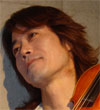 Hijiri Kuwano is a violinist. Since graduating from the Tokyo National University of Fine Arts and Music, Hijiri has been active as a leader of the strings section, a solo violinist studio musician, and support musician of top artists. In 1991, he offered his music to the concept album of Kenji Ishikawa’s photo collection “Moon Light Blue,” and was well received. Since then, he began working as a composer and arranger. He has arranged music for various artists, and has offered his music to concept albums, films, commercials and TV dramas. In 2002, he released his first solo album, “Toho-Genbunroku (Fiddler’s Philosophy)” from KICK UP Label.In 2004, he collaborated with Yoshikazu Suo in composing the music for the TBS animation “Bokyaku no Senritsu (The Melody of Oblivion),” and released a soundtrack with Victor Entertainment.With Yuki he played violin for .hack SIGN OST 1, .hack SIGN EXTRA OST, as well as for .hack Liminality OST.
Hijiri Kuwano is a violinist. Since graduating from the Tokyo National University of Fine Arts and Music, Hijiri has been active as a leader of the strings section, a solo violinist studio musician, and support musician of top artists. In 1991, he offered his music to the concept album of Kenji Ishikawa’s photo collection “Moon Light Blue,” and was well received. Since then, he began working as a composer and arranger. He has arranged music for various artists, and has offered his music to concept albums, films, commercials and TV dramas. In 2002, he released his first solo album, “Toho-Genbunroku (Fiddler’s Philosophy)” from KICK UP Label.In 2004, he collaborated with Yoshikazu Suo in composing the music for the TBS animation “Bokyaku no Senritsu (The Melody of Oblivion),” and released a soundtrack with Victor Entertainment.With Yuki he played violin for .hack SIGN OST 1, .hack SIGN EXTRA OST, as well as for .hack Liminality OST.
Official Site
Minagawa, Marina ☆
皆川 真里奈 Born April 27, 1982
 Starting violin at the age of 8, Minagawa Marina was accepted into the Toho Girls Senior High School’s music department and graduated from the Toho Gakuen School of Music. She has worked in various fields in music, ranging from classical songs to game soundtracks, as well as teaching music and participating in live performances. She has been praised by many for her beautiful sound and emotional expressiveness when she plays. Her involvement in Yuki’s work is limited to live performances so far- she was the violinist for Kalafina’s “storia” live in 2009 and played in the closed premium live. She is currently part of an instrumental duo called Troubadours.
Starting violin at the age of 8, Minagawa Marina was accepted into the Toho Girls Senior High School’s music department and graduated from the Toho Gakuen School of Music. She has worked in various fields in music, ranging from classical songs to game soundtracks, as well as teaching music and participating in live performances. She has been praised by many for her beautiful sound and emotional expressiveness when she plays. Her involvement in Yuki’s work is limited to live performances so far- she was the violinist for Kalafina’s “storia” live in 2009 and played in the closed premium live. She is currently part of an instrumental duo called Troubadours.
Official Site | Official Blog | Twitter account
Viola
Enokido, Takahiro
榎戸崇浩 Birthdate unknown
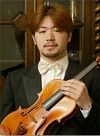 In 1988, Takahiro Enokido graduated from the music department of the Nagoya Municipal High School, and enrolled in university to study violin, subsequently winning first prize in the 44th Annual Student Musical Concours. In ’92, he majored in viola at Tokyo Music University; took third prize in the Settsu Music Festival’s “Little Camelia Concours” in ’93; and in ’96 performed in the 66th Yomiura Newcomers’ Concert. Since then, Enokido has played both violin and viola for many artists. For Yuki Kajiura, he played viola in the Elemental Gelade OST 1, the Mai-Hime OST 1, the Kalafina single “Lacrimosa”, and the Tsubasa Chronicle Future Soundscape IV.
In 1988, Takahiro Enokido graduated from the music department of the Nagoya Municipal High School, and enrolled in university to study violin, subsequently winning first prize in the 44th Annual Student Musical Concours. In ’92, he majored in viola at Tokyo Music University; took third prize in the Settsu Music Festival’s “Little Camelia Concours” in ’93; and in ’96 performed in the 66th Yomiura Newcomers’ Concert. Since then, Enokido has played both violin and viola for many artists. For Yuki Kajiura, he played viola in the Elemental Gelade OST 1, the Mai-Hime OST 1, the Kalafina single “Lacrimosa”, and the Tsubasa Chronicle Future Soundscape IV.
Official twitter
Furugawara, Hirohito
古川原裕仁 Birthdate unknown
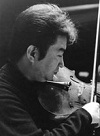 Hirohito Furugawara graduated from the National College of Music, and directly enrolled in the New Japan Philharmonic symphony orchestra. In 1987 he traveled to America and studied under Masao Kawasaki; in 1994, Furugawara began playing with a Tokyo orchestra as a soloist. He is currently involved in several orchestras, and is also a viola teacher. For Yuki Kajiura, he played viola in the See-Saw song “LOVE” and the Noir OST 2.
Hirohito Furugawara graduated from the National College of Music, and directly enrolled in the New Japan Philharmonic symphony orchestra. In 1987 he traveled to America and studied under Masao Kawasaki; in 1994, Furugawara began playing with a Tokyo orchestra as a soloist. He is currently involved in several orchestras, and is also a viola teacher. For Yuki Kajiura, he played viola in the See-Saw song “LOVE” and the Noir OST 2.
Naruse, Kaori
成瀬かおり Birthdate unknown
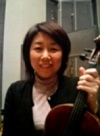 Kaori Naruse graduated from the Tokyo University of the Arts. She participated in the 12th annual Okinawa Moon Beach Music Festival, has traveled to Europe to perform, and has also played viola for many artists. Presently, she plays in chamber music and orchestras, as well as various recordings. In her own words, “a viola is an instrument from which you can request the two sides of ensemble power and solos”. For Yuki Kajiura, Naruse played viola in the “Everlasting Songs” version of “Michiyuki”, the Kalafina single “Aria”, and the Tsubasa Chronicle Future Soundscapes III and IV.
Kaori Naruse graduated from the Tokyo University of the Arts. She participated in the 12th annual Okinawa Moon Beach Music Festival, has traveled to Europe to perform, and has also played viola for many artists. Presently, she plays in chamber music and orchestras, as well as various recordings. In her own words, “a viola is an instrument from which you can request the two sides of ensemble power and solos”. For Yuki Kajiura, Naruse played viola in the “Everlasting Songs” version of “Michiyuki”, the Kalafina single “Aria”, and the Tsubasa Chronicle Future Soundscapes III and IV.
Onuma, Sachie
大沼幸江 Birthdate unknown
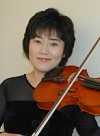 Sachie Onuma graduated from the Tokyo University of the Arts, focusing mainly on chamber music. Once accepted into an orchestra, she went on to perform in many concerts. Until 1994, she played violin and viola in ballets and operas, but chose to retreat from the orchestral side of performing in order to record in the studio. She currently performs in lives for various artists. For Yuki Kajiura, she played viola in the Rekishi Hiwa Historia OST I-II, the Kalafina single “Fairytale”, and the Kalafina album “After Eden”.
Sachie Onuma graduated from the Tokyo University of the Arts, focusing mainly on chamber music. Once accepted into an orchestra, she went on to perform in many concerts. Until 1994, she played violin and viola in ballets and operas, but chose to retreat from the orchestral side of performing in order to record in the studio. She currently performs in lives for various artists. For Yuki Kajiura, she played viola in the Rekishi Hiwa Historia OST I-II, the Kalafina single “Fairytale”, and the Kalafina album “After Eden”.
Yano, Haruko
矢野晴子 Birthdate unknown
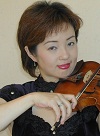 Haruko Yano is a graduate of the Tokyo University of the Arts, and took first place in the All-Japan Student Music Concours. She has performed for the Emperor of Japan, and has also worked with artists from the master class, gaining a favorable reputation both in Japan and Europe. Currently, she performs both solo and in chamber music, across a wide range of styles. For Yuki Kajiura, she played viola in the See-Saw song “Yasashii Yoake” and the .hack//SIGN Extra OST.
Haruko Yano is a graduate of the Tokyo University of the Arts, and took first place in the All-Japan Student Music Concours. She has performed for the Emperor of Japan, and has also worked with artists from the master class, gaining a favorable reputation both in Japan and Europe. Currently, she performs both solo and in chamber music, across a wide range of styles. For Yuki Kajiura, she played viola in the See-Saw song “Yasashii Yoake” and the .hack//SIGN Extra OST.
Cello
Ara, Yoko
荒庸子 Birthdate unknown
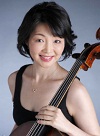 Yoko Ara was born in the Tokyo metropolitan area, and attended two music schools including Toudou, graduating in 1990. In ’92 she attained her music Master’s degree at Juilliard in New York City; while enrolled there, she was first cello in the Juilliard orchestra. Afterward she went on to perform in various American, Canadian and Japanese music festivals throughout the ’90s. In 2003 she released her first album, “Omoide no Eigakan ~ Taiyou ga Ippai ~”. Ara is currently a member of the all-women cello ensemble “Super Cello Ensemble Tokyo”, and also lectures at the Senzoku University of Music. For Yuki Kajiura, she played cello in the See-Saw song “Senya Ichiya”, the .hack//liminality OST, the Rekishi Hiwa Historia OST 2, and the Kalafina song “Neverending”.
Yoko Ara was born in the Tokyo metropolitan area, and attended two music schools including Toudou, graduating in 1990. In ’92 she attained her music Master’s degree at Juilliard in New York City; while enrolled there, she was first cello in the Juilliard orchestra. Afterward she went on to perform in various American, Canadian and Japanese music festivals throughout the ’90s. In 2003 she released her first album, “Omoide no Eigakan ~ Taiyou ga Ippai ~”. Ara is currently a member of the all-women cello ensemble “Super Cello Ensemble Tokyo”, and also lectures at the Senzoku University of Music. For Yuki Kajiura, she played cello in the See-Saw song “Senya Ichiya”, the .hack//liminality OST, the Rekishi Hiwa Historia OST 2, and the Kalafina song “Neverending”.
Official Site
Furukawa, Nobuo
古川展生 Born May 9, 1973 (in Kyoto)
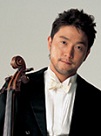 Nobuo Furukawa graduated from Touhou Academy and apprenticed under cellists such as Mineo Hayashi and Chishou Akitsu; in 1996, he was awarded the Yasuda Quality of Life Scholarship. Studying abroad in Hungary, he apprenticed under a famous Hungarian cellist, and in 1997 was awarded a diploma in the cello section of an international competition. After returning to Japan in 1998, he became first cello in the Tokyo Metropolitan Orchestra, and has remained in that position ever since. As a soloist, he has appeared with famous conductors and played with many orchestras including the Vienna Philharmonic, done national tours, and received great admiration. Furukawa has recently sought to expand his knowledge of chamber music, performing both within Japan and elsewhere; however, he is also known as a pops, jazz and tango artist, doing collaborations and live house concerts. So far he has released six solo albums and two best collections, with both classical and crossover themes. Also, he is a part of the successful strings quartet ARCO, and the unit KOBUDO. For Yuki Kajiura, he played cello in the FictionJunction YUUKA song “Piano”.
Nobuo Furukawa graduated from Touhou Academy and apprenticed under cellists such as Mineo Hayashi and Chishou Akitsu; in 1996, he was awarded the Yasuda Quality of Life Scholarship. Studying abroad in Hungary, he apprenticed under a famous Hungarian cellist, and in 1997 was awarded a diploma in the cello section of an international competition. After returning to Japan in 1998, he became first cello in the Tokyo Metropolitan Orchestra, and has remained in that position ever since. As a soloist, he has appeared with famous conductors and played with many orchestras including the Vienna Philharmonic, done national tours, and received great admiration. Furukawa has recently sought to expand his knowledge of chamber music, performing both within Japan and elsewhere; however, he is also known as a pops, jazz and tango artist, doing collaborations and live house concerts. So far he has released six solo albums and two best collections, with both classical and crossover themes. Also, he is a part of the successful strings quartet ARCO, and the unit KOBUDO. For Yuki Kajiura, he played cello in the FictionJunction YUUKA song “Piano”.
Official Site
Kasahara, Ayano
笠原あやの Birthdate unknown
 Ayano Kasahara is a Japanese cello player. She started out on the cello at the age of 6. After graduating from the Senzoku College of Music, she attended the Ensemble Diploma Course at the Toho College of Music. In 1993, she won a prize at the Tateshina Music Festival. Based on classical performance in symphonies and chamber orchestras, she has participated in studio sessions of pop artists, and has extended her range of activity. While working with Yuki Kajiura she played cello in Chiba Saeko’s albums Everything and Melody as well as in many soundtracks like Noir OST 1 and Noir blanc dans Noir, Madlax OST 2, Le Portrait de Petit Cossette OST, Erementar Gerad OST I and II, Mai Otome OST 1 and 2, Mai-Hime OST 1 and 2, and Tsubasa Chronicle Future Soundscape I, II and IV. She also played in Xenosaga Episode III: Also Sprach Zarathustra Original Sound Best Tracks.
Ayano Kasahara is a Japanese cello player. She started out on the cello at the age of 6. After graduating from the Senzoku College of Music, she attended the Ensemble Diploma Course at the Toho College of Music. In 1993, she won a prize at the Tateshina Music Festival. Based on classical performance in symphonies and chamber orchestras, she has participated in studio sessions of pop artists, and has extended her range of activity. While working with Yuki Kajiura she played cello in Chiba Saeko’s albums Everything and Melody as well as in many soundtracks like Noir OST 1 and Noir blanc dans Noir, Madlax OST 2, Le Portrait de Petit Cossette OST, Erementar Gerad OST I and II, Mai Otome OST 1 and 2, Mai-Hime OST 1 and 2, and Tsubasa Chronicle Future Soundscape I, II and IV. She also played in Xenosaga Episode III: Also Sprach Zarathustra Original Sound Best Tracks.
Official Blog | Twitter account
Kitaguchi, Daisuke
北口大輔 Born 1978
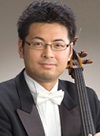 Daisuke Kitaguchi studied cello at the Tokyo University of the Arts, and also completed a Master’s degree program at the same school. After graduation, he won prizes in several music contests. Currently, he’s mainly active performing as a guest of the Tokyo Philharmonic Orchestra, but also performs with several other orchestras both large and small. He has also played in the NHK-FM programs “Meikyoku Recital” and “Gendai no Ongaku”, and performs in jazz and bossa nova styles as well as classical. For Yuki Kajiura, Kitaguchi played cello in the Mai-Hime OST 2.
Daisuke Kitaguchi studied cello at the Tokyo University of the Arts, and also completed a Master’s degree program at the same school. After graduation, he won prizes in several music contests. Currently, he’s mainly active performing as a guest of the Tokyo Philharmonic Orchestra, but also performs with several other orchestras both large and small. He has also played in the NHK-FM programs “Meikyoku Recital” and “Gendai no Ongaku”, and performs in jazz and bossa nova styles as well as classical. For Yuki Kajiura, Kitaguchi played cello in the Mai-Hime OST 2.
Miyake, Susumu
三宅進 Birthdate unknown
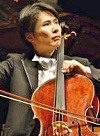 Susumu Miyake was born in the Tokyo metropolitan area, and graduated from Touhou University. He studied under famous cellists in America in the 1980s, returned to Japan in 1990, and has since played in various orchestras and participated in many contests. Recently he has been playing in chamber music and studio recordings, as well as on NHK FM’s programs “Best of Classics” and “FM Recital”. For Yuki Kajiura, he played cello in the Elemental Gelade React Re-No 1 (the second OST).
Susumu Miyake was born in the Tokyo metropolitan area, and graduated from Touhou University. He studied under famous cellists in America in the 1980s, returned to Japan in 1990, and has since played in various orchestras and participated in many contests. Recently he has been playing in chamber music and studio recordings, as well as on NHK FM’s programs “Best of Classics” and “FM Recital”. For Yuki Kajiura, he played cello in the Elemental Gelade React Re-No 1 (the second OST).
Official Site | Official Blog
Mizoguchi, Hajime
溝口 肇 Born April 23, 1960
 Hajime Mizoguchi, cellist and composer, was born in 1960 in Tokyo. He started playing piano in 1963 and cello in 1971, majoring at the Tokyo University of Art; while in college he began playing the cello with Japanese pop-singers and worked as a studio musician for radio, TV, films, and albums. At the age of 22, he had a serious traffic accident, which made him start composing. He was married to composer Yoko Kanno until 2007, and collaborated with her on the soundtracks for “Please Save My Earth” and “Vision of Escaflowne”. He worked with Yuki Kajiura by playing cello for See-Saw’s “Early Best” album.
Hajime Mizoguchi, cellist and composer, was born in 1960 in Tokyo. He started playing piano in 1963 and cello in 1971, majoring at the Tokyo University of Art; while in college he began playing the cello with Japanese pop-singers and worked as a studio musician for radio, TV, films, and albums. At the age of 22, he had a serious traffic accident, which made him start composing. He was married to composer Yoko Kanno until 2007, and collaborated with her on the soundtracks for “Please Save My Earth” and “Vision of Escaflowne”. He worked with Yuki Kajiura by playing cello for See-Saw’s “Early Best” album.
Official Site | Official Blog
Erhu
Shinozaki, Masatsugu
篠崎正嗣 Born February 17, 1950 (in Tokyo metropolitan area)
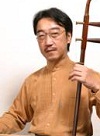 Masatsugu Shinozaki is a composer, arranger, and studio musician. His main work is in acoustic and electric violin performances, but he also performs on the erhu. Through the 1980s, 1990s, and 2000s, he has performed for artists such as Ayumi Hamasaki, T.M. Revolution and GLAY, in TV dramas and films, and in anime such as Ghost In The Shell: Stand Alone Complex and Gundam Seed Destiny. One of his most steady works has been for the Final Fantasy games, performing in the soundtracks for Final Fantasy VIII, IX, X, XI, and XII. For Yuki Kajiura, he played erhu in the FictionJunction YUUKA song “Silly-Go-Round” and the Hokuto no Ken movie OST.
Masatsugu Shinozaki is a composer, arranger, and studio musician. His main work is in acoustic and electric violin performances, but he also performs on the erhu. Through the 1980s, 1990s, and 2000s, he has performed for artists such as Ayumi Hamasaki, T.M. Revolution and GLAY, in TV dramas and films, and in anime such as Ghost In The Shell: Stand Alone Complex and Gundam Seed Destiny. One of his most steady works has been for the Final Fantasy games, performing in the soundtracks for Final Fantasy VIII, IX, X, XI, and XII. For Yuki Kajiura, he played erhu in the FictionJunction YUUKA song “Silly-Go-Round” and the Hokuto no Ken movie OST.
Official Blog
Electric Guitar
Akiyama, Hironori ☆
秋山浩徳 Born April 22, 1970 (in Chiba-ken, Sakura-shi)
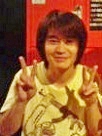 Hironori Akiyama began playing the guitar in middle school. After playing for two years, he saw a Van Halen promo video on TV and was inspired to continue copying a hard rock style; three years later he formed a hard rock band as an upperclassman and, listening to Wes Montgomery’s ‘octave’ playing style, picked up jazz as well. He went to Kataoka with a friend after graduating senior high school, and at that time began working as a pro in recording and lives, but found setbacks in the worries of money. For a while he was living day-to-day, but his bandmates eventually found him work as an arranger and guitarist, and he served as support for the band “Tumbling”. Afterward, he got to know the members of Moon Child while at a convention live and became a member himself, which he remains today. Akiyama has also performed in many Hikaru Utada releases. For Yuki Kajiura, he played guitar in the two FictionJunction YUUKA Premium Live concerts in 2007.
Hironori Akiyama began playing the guitar in middle school. After playing for two years, he saw a Van Halen promo video on TV and was inspired to continue copying a hard rock style; three years later he formed a hard rock band as an upperclassman and, listening to Wes Montgomery’s ‘octave’ playing style, picked up jazz as well. He went to Kataoka with a friend after graduating senior high school, and at that time began working as a pro in recording and lives, but found setbacks in the worries of money. For a while he was living day-to-day, but his bandmates eventually found him work as an arranger and guitarist, and he served as support for the band “Tumbling”. Afterward, he got to know the members of Moon Child while at a convention live and became a member himself, which he remains today. Akiyama has also performed in many Hikaru Utada releases. For Yuki Kajiura, he played guitar in the two FictionJunction YUUKA Premium Live concerts in 2007.
Official Site
Baba, Kazuyoshi
馬場一嘉 Born April 5, 1967 (in Mie-ken)
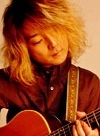 After graduating from the voice department of Musashino College of Music and making his major debut as guitarist with the rock group “UB-TAPS”, Kazuyoshi Baba left the music world for two years, but soon became active as a composer-guitarist. He has done stage support for Miri Watanabe and Yoshiko Moriyama, Takashi Morihiro, Makoto Kawamoto, Kouji Motohiro, Mina Ganaha and others, and performed in artists’ concerts in extensive genres. As a composer, he composed the main theme song for “Hoshi no Kakera o Sagashi ni Ikou~Again~”, and has also composed, produced and arranged for Whiteberry, Rinkou Kuroda, TOKIO, and many others; he has also released two mini albums. In 2007 he started a new project, “Baba Kazuyoshi Style”. For Yuki Kajiura, he played electric guitar in the Mai-Hime OST 1-2 and the Mai-Otome Best Collection.
After graduating from the voice department of Musashino College of Music and making his major debut as guitarist with the rock group “UB-TAPS”, Kazuyoshi Baba left the music world for two years, but soon became active as a composer-guitarist. He has done stage support for Miri Watanabe and Yoshiko Moriyama, Takashi Morihiro, Makoto Kawamoto, Kouji Motohiro, Mina Ganaha and others, and performed in artists’ concerts in extensive genres. As a composer, he composed the main theme song for “Hoshi no Kakera o Sagashi ni Ikou~Again~”, and has also composed, produced and arranged for Whiteberry, Rinkou Kuroda, TOKIO, and many others; he has also released two mini albums. In 2007 he started a new project, “Baba Kazuyoshi Style”. For Yuki Kajiura, he played electric guitar in the Mai-Hime OST 1-2 and the Mai-Otome Best Collection.
Official Site | Official Blog | Twitter account
Furukawa, Hiroshi
古川ヒロシ Birthdate unknown
 Hiroshi Furukawa is a guitarist, composer, arranger and producer. As producer, he has overseen music production in films such as “TAJOMARU” and “Close ZERO”; as composer, he has written music for EXILE, Rina Chinen, and Miho Karasawa, among others. Also, he has performed in recordings for Yuuko Arai, Kinki Kids, Aya Ueto, NEWS, Mari Hoshino, and Akira Yamada, and provided television and game music. For Yuki Kajiura, he has played guitar for See-Saw, in the Saeko Chiba album “Melody”, and in the Mai-Hime OST 1 and El Cazador de la Bruja OST 1.
Hiroshi Furukawa is a guitarist, composer, arranger and producer. As producer, he has overseen music production in films such as “TAJOMARU” and “Close ZERO”; as composer, he has written music for EXILE, Rina Chinen, and Miho Karasawa, among others. Also, he has performed in recordings for Yuuko Arai, Kinki Kids, Aya Ueto, NEWS, Mari Hoshino, and Akira Yamada, and provided television and game music. For Yuki Kajiura, he has played guitar for See-Saw, in the Saeko Chiba album “Melody”, and in the Mai-Hime OST 1 and El Cazador de la Bruja OST 1.
Official Site | Official Blog | Twitter account
Inaba, Masahiro
稲葉政裕 Born November 3, 1960 (in Oita-ken)
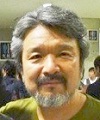 While in his second year of junior high, Masahiro Inaba began listening to bands such as Deep Purple, and subsequently started playing guitar. He formed an amateur band in high school, and moved to Fukuoka at age 18; while learning Yamaha’s electric guitar classes, he became a TV and radio personality. At 26, he moved to Tokyo and has since played in recordings and lives for Amazons, Makihiko Aragi, Seishiro Kusunose, Shinji Tanimura, BIG HORNS BEE, and Morning Musume, among others. Presently Inaba is a member of FAR EAST CLUB BAND, and has released two albums with them thus far. For Yuki Kajiura, he played electric guitar in the .hack//EXTRA OST.
While in his second year of junior high, Masahiro Inaba began listening to bands such as Deep Purple, and subsequently started playing guitar. He formed an amateur band in high school, and moved to Fukuoka at age 18; while learning Yamaha’s electric guitar classes, he became a TV and radio personality. At 26, he moved to Tokyo and has since played in recordings and lives for Amazons, Makihiko Aragi, Seishiro Kusunose, Shinji Tanimura, BIG HORNS BEE, and Morning Musume, among others. Presently Inaba is a member of FAR EAST CLUB BAND, and has released two albums with them thus far. For Yuki Kajiura, he played electric guitar in the .hack//EXTRA OST.
Official Site
Koike, Takahiro
古池孝浩 Born March 23, 1970 (in Hyougo-ken)
 From 3 to 12 years old Takahiro Koike learned the piano, but at the age of 13 began playing guitar after discovering rock music. At 15 he formed a band and performed in the local Kobe area; at 24 he moved alone to Tokyo, and began playing pro in various sessions. He’s played live for, among others, Kanako Tsuruda, MIE, Rin Nakajima, Atsushi Shindou, and done recording for Toshihiko Tawara and Hiroyuki Matsuda, as well as doing arranging work. For Yuki Kajiura, he played guitar in the Noir OST 1-2, the Mai-Hime OST 1, several songs in the Saeko Chiba albums “Melody” and “Everything”, and the Saeko Chiba single “Hikari”.
From 3 to 12 years old Takahiro Koike learned the piano, but at the age of 13 began playing guitar after discovering rock music. At 15 he formed a band and performed in the local Kobe area; at 24 he moved alone to Tokyo, and began playing pro in various sessions. He’s played live for, among others, Kanako Tsuruda, MIE, Rin Nakajima, Atsushi Shindou, and done recording for Toshihiko Tawara and Hiroyuki Matsuda, as well as doing arranging work. For Yuki Kajiura, he played guitar in the Noir OST 1-2, the Mai-Hime OST 1, several songs in the Saeko Chiba albums “Melody” and “Everything”, and the Saeko Chiba single “Hikari”.
Official Site
Korenaga, Kōichi ☆
是永巧一 Born December 25, 1961
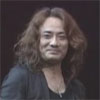 Koichi Korenaga is a Japanese guitarist, composer, arranger, and producer. He is known for composing soundtracks for the anime series Love Hina, Bubblegum Crisis Tokyo 2040, The Legend of Black Heaven, and Maburaho. He is also the guitarist of the Japanese group JUNGAPOP and has released 3 albums with them so far. While working with Yuki Kajiura he played electric guitar in See-Saw’s “Dream Field” and “Kimi wa Boku ni Niteiru” (single), Chiba Saeko’s albums “Everything” and “Melody”, FictionJunction Yuuka’s “Destination” and “circus”, Yui Makino’s “synchronicity”, as well as in”Sprinter/Aria” of Kalafina. He also played in soundtracks such as Madlax OST 1-2, Tsubasa Chronicle future soundscape II-IV, Mai-Otome OST 1-2, Mai-Hime OST 1-2, Le portait de Petit Cossette OST, Hokuto no Ken OST, El Cazador OST 1-2, and Kara no Kyoukai OST 1, 3, and 4. Furthermore, he’s performed in nearly all of Yuki Kajiura’s lives, both for FictionJunction and Kalafina.
Koichi Korenaga is a Japanese guitarist, composer, arranger, and producer. He is known for composing soundtracks for the anime series Love Hina, Bubblegum Crisis Tokyo 2040, The Legend of Black Heaven, and Maburaho. He is also the guitarist of the Japanese group JUNGAPOP and has released 3 albums with them so far. While working with Yuki Kajiura he played electric guitar in See-Saw’s “Dream Field” and “Kimi wa Boku ni Niteiru” (single), Chiba Saeko’s albums “Everything” and “Melody”, FictionJunction Yuuka’s “Destination” and “circus”, Yui Makino’s “synchronicity”, as well as in”Sprinter/Aria” of Kalafina. He also played in soundtracks such as Madlax OST 1-2, Tsubasa Chronicle future soundscape II-IV, Mai-Otome OST 1-2, Mai-Hime OST 1-2, Le portait de Petit Cossette OST, Hokuto no Ken OST, El Cazador OST 1-2, and Kara no Kyoukai OST 1, 3, and 4. Furthermore, he’s performed in nearly all of Yuki Kajiura’s lives, both for FictionJunction and Kalafina.
Twitter account
Nishikawa, Susumu ☆
西川進 Born July 9
 Susumu Nishikawa is a professional guitarist and producer. He was born in Yawata, Kyoto. He has worked with many many artists since 1986, among them are: Shiina Ringo, Do As Infinity, Suga Shikao, Hamasaki Ayumi, Shimatani Hitomi, Horie Yui, Angela Aki, Kouda Mariko, misono, Kitade Nana, Nagai Mariko, Nakamura Ayumi and many others. As producer he has worked with The Turtles, KOKIA and OLIVIA. He has also been a regular performer in the backing band at Animax Musix concerts.
Susumu Nishikawa is a professional guitarist and producer. He was born in Yawata, Kyoto. He has worked with many many artists since 1986, among them are: Shiina Ringo, Do As Infinity, Suga Shikao, Hamasaki Ayumi, Shimatani Hitomi, Horie Yui, Angela Aki, Kouda Mariko, misono, Kitade Nana, Nagai Mariko, Nakamura Ayumi and many others. As producer he has worked with The Turtles, KOKIA and OLIVIA. He has also been a regular performer in the backing band at Animax Musix concerts.
While working with Yuki Kajiura he has played music in See-Saw (Dream Field, early best, Kimi ga Ita Monogatari), in Life Goes On sung by Mika Arisaka , in the album “Fiction”, in FictionJunction’s YUUKA albums Destination and circus. He has also played music and/or arranged songs in Chiba Saeko’s albums “Everything” and “Melody”. Moreover we can hear his electric guitar in Yuki’s soundtracks such as .hack//Liminality, .hack//SIGN OST 1-2, Madlax OST 2 and Tsubasa Chronicle’s Future Soundscape I-II. He also performed in Yuki’s Anime Expo 2003 in USA.
Official Site | Official Blog | Twitter account
Classical & Acoustic Guitar
Amano, Kiyotsugu
天野清継 Born 1956 (in the Tokyo metropolitan area)
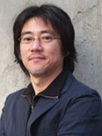 Kiyotsugu Amano began playing the piano at age 3, and the guitar at age 11. After graduating from college, he performed with Sadao Watanabe’s group on their nationwide tour and began performing regularly as a professional. In 1988 he moved to the US and studied at the Grove School of Music, also serving as a support musician and performing at West Coast live houses. After returning to Japan, he released his first album “AZURE” and has since released several others. Recently Amano has played for Jungle Smile, Kazumi Watanabe, Ken Hirai, Rimi Kagawa and others in recordings and lives, and also does producing work. For Yuki Kajiura, he played acoustic guitar in the Madlax OST 1-2, and the FictionJunction YUUKA song “Romanesque”; he also played guitar in the Rekishi Hiwa Historia OST 2.
Kiyotsugu Amano began playing the piano at age 3, and the guitar at age 11. After graduating from college, he performed with Sadao Watanabe’s group on their nationwide tour and began performing regularly as a professional. In 1988 he moved to the US and studied at the Grove School of Music, also serving as a support musician and performing at West Coast live houses. After returning to Japan, he released his first album “AZURE” and has since released several others. Recently Amano has played for Jungle Smile, Kazumi Watanabe, Ken Hirai, Rimi Kagawa and others in recordings and lives, and also does producing work. For Yuki Kajiura, he played acoustic guitar in the Madlax OST 1-2, and the FictionJunction YUUKA song “Romanesque”; he also played guitar in the Rekishi Hiwa Historia OST 2.
Official Site |
Arita, Yoshihiro
有田純弘 Birthdate unknown
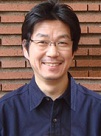 Yoshihiro Arita was born in Osaka-ken, and was very active in the Kansai scene. In 1984 he went to America, and won the National Bluegrass Banjo Championship the following year. After graduating from a music university, he stayed in Boston, Massachusetts and performed jazz, bluegrass and folk music, appearing with various artists including Jerry Lee Lewis. Returning to Japan in the early 1990s, he released “Whale Dance”, an album of original bluegrass compositions, in ’92. He has since played for artists such as coba, Hirofumi Tokutake (Dr.K), and Masaji Fukuyama, as well as developing the banjo-based Yoshihiro Arita Trio; also, he has published several instructional videos on guitar and banjo playing. Arita is currently a lecturer at Senzoku University, teaching jazz courses. For Yuki Kajiura, he played acoustic guitar in the Mai-Hime OST 2.
Yoshihiro Arita was born in Osaka-ken, and was very active in the Kansai scene. In 1984 he went to America, and won the National Bluegrass Banjo Championship the following year. After graduating from a music university, he stayed in Boston, Massachusetts and performed jazz, bluegrass and folk music, appearing with various artists including Jerry Lee Lewis. Returning to Japan in the early 1990s, he released “Whale Dance”, an album of original bluegrass compositions, in ’92. He has since played for artists such as coba, Hirofumi Tokutake (Dr.K), and Masaji Fukuyama, as well as developing the banjo-based Yoshihiro Arita Trio; also, he has published several instructional videos on guitar and banjo playing. Arita is currently a lecturer at Senzoku University, teaching jazz courses. For Yuki Kajiura, he played acoustic guitar in the Mai-Hime OST 2.
Official Site
Berliner, Jay
Birthdate unknown
 Jay Berliner was born in Brooklyn, New York and is a graduate of the Eastman School of Music. Following school he returned to New York City where, over the past twenty years, he has played on over 10,000 recordings ranging from phonograph records to commercial jingles to motion pictures and television. For five consecutive years he won “Most Valuable Player Award for Best Acoustic Guitar Player” from NARAS (National Academy of Recording Arts and Sciences). With Yuki he has played acoustic guitar in the songs “winter” and “canta per me” of the album Fiction.
Jay Berliner was born in Brooklyn, New York and is a graduate of the Eastman School of Music. Following school he returned to New York City where, over the past twenty years, he has played on over 10,000 recordings ranging from phonograph records to commercial jingles to motion pictures and television. For five consecutive years he won “Most Valuable Player Award for Best Acoustic Guitar Player” from NARAS (National Academy of Recording Arts and Sciences). With Yuki he has played acoustic guitar in the songs “winter” and “canta per me” of the album Fiction.
Chiyo, Masayuki
千代正行 Born 1954
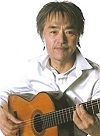 In 1979 Masayuki Chiyo released his first album, titled “Mellow Guitar Vibration”; from there he went on to play guitar for CMs, television, anime and dramas, as well as supporting countless artists and arranging music for projects such as NHK’s “Yamaguchi sanchi no Tsutomu-kun”. Over the years, he has earned the trust of many performers and musicians. For Yuki Kajiura, Chiyo played acoustic guitar in the Elemental Gelade OSTs, the Mai-Hime OST 1 and 2, the Rekishi Hiwa Historia OST 1, and the Tsubasa Chronicle Future Soundscape I and II.
In 1979 Masayuki Chiyo released his first album, titled “Mellow Guitar Vibration”; from there he went on to play guitar for CMs, television, anime and dramas, as well as supporting countless artists and arranging music for projects such as NHK’s “Yamaguchi sanchi no Tsutomu-kun”. Over the years, he has earned the trust of many performers and musicians. For Yuki Kajiura, Chiyo played acoustic guitar in the Elemental Gelade OSTs, the Mai-Hime OST 1 and 2, the Rekishi Hiwa Historia OST 1, and the Tsubasa Chronicle Future Soundscape I and II.
Official Site | Official Blog
Furukawa, Masayoshi
古川昌義 Born March 10, 1964
 Masayoshi Furukawa began taking classical guitar lessons at 7. In 1976 he took second prize in a ‘contest for newcomers’, and also played in recitals and such. In 1981 he began working in the studio, and became absorbed in popular music; in 1986 he moved to Tokyo from his hometown Osaka. Lately he does both recordings and concerts for various artists, as well as producing artists’ work and television music. He’s also released four solo albums. For Yuki Kajiura, Furukawa played acoustic guitar and/or madlin in the See-Saw single “Tsuki Hitotsu” and the song “Seijaku wa Headphone no naka”, played both acoustic and electric guitar in the FJ YUUKA singles “Honoo no Tobira” and “Akatsuki no Kuruma”, and in the FJ Asuka single “everlasting song”. He also played in the Noir OST I-II and noir blanc danc noir OST, Mai Otome OST I-II, .hack//SIGN OST 2, .hack//EXTRA and the El Cazador de la Bruja OST.
Masayoshi Furukawa began taking classical guitar lessons at 7. In 1976 he took second prize in a ‘contest for newcomers’, and also played in recitals and such. In 1981 he began working in the studio, and became absorbed in popular music; in 1986 he moved to Tokyo from his hometown Osaka. Lately he does both recordings and concerts for various artists, as well as producing artists’ work and television music. He’s also released four solo albums. For Yuki Kajiura, Furukawa played acoustic guitar and/or madlin in the See-Saw single “Tsuki Hitotsu” and the song “Seijaku wa Headphone no naka”, played both acoustic and electric guitar in the FJ YUUKA singles “Honoo no Tobira” and “Akatsuki no Kuruma”, and in the FJ Asuka single “everlasting song”. He also played in the Noir OST I-II and noir blanc danc noir OST, Mai Otome OST I-II, .hack//SIGN OST 2, .hack//EXTRA and the El Cazador de la Bruja OST.
Official Site
Tashiro, Koichiro
田代耕一郎 Born 1957 (in Tokyo)
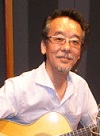 Koichiro Tashiro first showed musical interest in grade school when his younger brother bought a ukulele, and he began the guitar in middle school; eventually he began playing bluegrass with the mandolin and banjo. After dropping out of law school, he set his sights on becoming a pro guitarist; in 1978 he got his chance and, after studying the industry, made his debut within a year. In 1989 Tashiro founded his private studio “STUDIO ALCHEMY”, met other various artists and worked in composing. 1990 saw him travel to Europe and become greatly interested in its music and various instruments; he spent two years on a walking tour, buying local instruments, and upon returning home turned his house into a literal instrument museum. He currently plays many folk instruments, aiming at “an original acoustic world”. For Yuki Kajiura, he played acoustic guitar in: the See-Saw song “Kioku”; several songs from the Kalafina albums “Seventh Heaven” and “After Eden” (also playing the oud in the latter); several songs from the FictionJunction album “Everlasting Songs” and Yuki’s solo album “Fiction”; the OSTs for EAT-MAN, Tsuki, and Sekai Satoyama Kikou (all of which are in The Works For Soundtrack collection); several songs in the .hack/SIGN OST 2 and the Tsubasa Chronicle Future Soundscape III; the Hokuto no Ken, Mai-Hime, Pandora Hearts, and Puella Magi Madoka Magica OSTs; and the FictionJunction YUUKA songs “Yorokobi” and “Nostalgia”.
Koichiro Tashiro first showed musical interest in grade school when his younger brother bought a ukulele, and he began the guitar in middle school; eventually he began playing bluegrass with the mandolin and banjo. After dropping out of law school, he set his sights on becoming a pro guitarist; in 1978 he got his chance and, after studying the industry, made his debut within a year. In 1989 Tashiro founded his private studio “STUDIO ALCHEMY”, met other various artists and worked in composing. 1990 saw him travel to Europe and become greatly interested in its music and various instruments; he spent two years on a walking tour, buying local instruments, and upon returning home turned his house into a literal instrument museum. He currently plays many folk instruments, aiming at “an original acoustic world”. For Yuki Kajiura, he played acoustic guitar in: the See-Saw song “Kioku”; several songs from the Kalafina albums “Seventh Heaven” and “After Eden” (also playing the oud in the latter); several songs from the FictionJunction album “Everlasting Songs” and Yuki’s solo album “Fiction”; the OSTs for EAT-MAN, Tsuki, and Sekai Satoyama Kikou (all of which are in The Works For Soundtrack collection); several songs in the .hack/SIGN OST 2 and the Tsubasa Chronicle Future Soundscape III; the Hokuto no Ken, Mai-Hime, Pandora Hearts, and Puella Magi Madoka Magica OSTs; and the FictionJunction YUUKA songs “Yorokobi” and “Nostalgia”.
Official Site | Twitter account
Harp
Asakawa, Tomoyuki
朝川朋之 Birthdate unknown
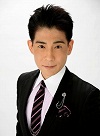 Tomoyuki Asakawa graduated from Tokyo University of the Arts in 1983, having been attached to the university from senior high school onward. While enrolled there, he composed and arranged music for films, TV drama, and anime, including the movies “FLOWERS” and “Kizuna”, and the dramas “Kokoro wa itsumo ramune iro” and “Jun-chan no ouenka”. His popularity was such that, in September of 1998, Koike Strings sponsored a performance titled “Asakawa Tomoyuki no Sekai” (The World of Tomoyuki Asakawa). Aside from the harp, he also plays piano and organ, and has performed in concerts from the mid-80s till today, as well as releasing 4 albums from different record companies. Throughout his career he has performed in tours and recordings for artists including Stevie Wonder and Ayumi Hamasaki. For Yuki Kajiura, Asakawa played harp in the Hokuto no Ken movie OST.
Tomoyuki Asakawa graduated from Tokyo University of the Arts in 1983, having been attached to the university from senior high school onward. While enrolled there, he composed and arranged music for films, TV drama, and anime, including the movies “FLOWERS” and “Kizuna”, and the dramas “Kokoro wa itsumo ramune iro” and “Jun-chan no ouenka”. His popularity was such that, in September of 1998, Koike Strings sponsored a performance titled “Asakawa Tomoyuki no Sekai” (The World of Tomoyuki Asakawa). Aside from the harp, he also plays piano and organ, and has performed in concerts from the mid-80s till today, as well as releasing 4 albums from different record companies. Throughout his career he has performed in tours and recordings for artists including Stevie Wonder and Ayumi Hamasaki. For Yuki Kajiura, Asakawa played harp in the Hokuto no Ken movie OST.
Official Site
Bass
Kuroda, Motohiro
黒田元浩 Born May 14, 1976 (in Yokohama)
 Motohiro Kuroda began learning the bass in his third year of middle school, and entered into a certain musicology school after graduating from senior high school. On the path of a studio musician, he has since been active for various artists such as aiko, Masashi Akigawa, Akira Himeno, Naomi Amagata, Shingo Katou, and BIG BELL; he has also arranged songs for certain artists’ albums. His specialties are a certain style of picking and slapping, and he can play well on the wood bass. Currently he’s a member of the group “smashroom”. For Yuki Kajiura, he played bass in the FictionJunction YUUKA songs “Hitomi no Kakera” and “Inside your Heart”.
Motohiro Kuroda began learning the bass in his third year of middle school, and entered into a certain musicology school after graduating from senior high school. On the path of a studio musician, he has since been active for various artists such as aiko, Masashi Akigawa, Akira Himeno, Naomi Amagata, Shingo Katou, and BIG BELL; he has also arranged songs for certain artists’ albums. His specialties are a certain style of picking and slapping, and he can play well on the wood bass. Currently he’s a member of the group “smashroom”. For Yuki Kajiura, he played bass in the FictionJunction YUUKA songs “Hitomi no Kakera” and “Inside your Heart”.
Official Site | Official Blog
Matsuda “FIRE” Takumi
松田“FIRE”卓己 Born May 25
 Takumi Matsuda spent his youth in Nara, and began playing the bass at 16. When he was 20 he decided to leave off Indonesian studies at the Imperial University, and enrolled in the Osaka School of Music. Afterward he studied jazz abroad in L.A for one year, but also playing rock. From that time, he began calling himself “FIRE”. After returning to Japan, he was both a research student and a lecturer at the Osaka School of Music, and soon moved to Tokyo. He’s played in many bands since then for both lives and recordings, and lately is active in lives for Motohiro Hata and Namie Amuro. For Yuki Kajiura, he played bass in most songs on her solo album “Fiction II”, in several songs on Saeko Chiba’s albums “Everything” and “Melody” and in the Kalafina song “Hikari no Senritsu”.
Takumi Matsuda spent his youth in Nara, and began playing the bass at 16. When he was 20 he decided to leave off Indonesian studies at the Imperial University, and enrolled in the Osaka School of Music. Afterward he studied jazz abroad in L.A for one year, but also playing rock. From that time, he began calling himself “FIRE”. After returning to Japan, he was both a research student and a lecturer at the Osaka School of Music, and soon moved to Tokyo. He’s played in many bands since then for both lives and recordings, and lately is active in lives for Motohiro Hata and Namie Amuro. For Yuki Kajiura, he played bass in most songs on her solo album “Fiction II”, in several songs on Saeko Chiba’s albums “Everything” and “Melody” and in the Kalafina song “Hikari no Senritsu”.
Official Site | Official Blog | Twitter account
Miyamoto, Sting
STING宮本 Born March 25, 1963
 In 1991 Sting Miyamoto made his debut in the five-person band RIO, he was in charge of bass, acoustic guitar,and composition. When the band broke up in 1995, he worked in both lives and studio recordings, playing many different genres, and eventually becoming both an artist and arranger. He currently plays the electric, wood, and acoustic bass, and is a teacher at the ‘Sting Miyamoto Bass School’ for aspiring bassists. For Yuki Kajiura, he played bass in two songs on Saeko Chiba’s album “Everything”, in the song “Forest” from the El Cazador de la Bruja OST as well as in the Petit Cossette and Tsubasa Chronicle vol I-II soundtracks.
In 1991 Sting Miyamoto made his debut in the five-person band RIO, he was in charge of bass, acoustic guitar,and composition. When the band broke up in 1995, he worked in both lives and studio recordings, playing many different genres, and eventually becoming both an artist and arranger. He currently plays the electric, wood, and acoustic bass, and is a teacher at the ‘Sting Miyamoto Bass School’ for aspiring bassists. For Yuki Kajiura, he played bass in two songs on Saeko Chiba’s album “Everything”, in the song “Forest” from the El Cazador de la Bruja OST as well as in the Petit Cossette and Tsubasa Chronicle vol I-II soundtracks.
Official Site
Nozaki, Morio ☆
野崎森男 Born April 7, 1977
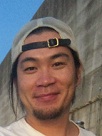
The younger brother of drummer Masuke, he usually goes by the nickname Morio. He’s played bass in lives and recordings for Kimeru, TM Revolution, and others, and is the sole member of the band Fuzz Factory. For Yuki Kajiura, he played bass in Kalafina’s Progressive Live Tour, their recent MachiAsobi Vol. 8 performance, and the song “Everytime You Kissed Me” from the Pandora Hearts OST.
Official Blog | Twitter account
Ogiwara “Mecken” Motofumi
荻原“MECKEN”基文 Birthdate Unknown
 In his amateur days, Mecken was involved with the bands “Georgia”, and “Barbie Boys”. He made his professional deput with the fusion band “YOU”. Afterward, he worked for many artists from the early 1990s onward. Lately he’s worked with Masatoshi Nakamura, Kaitai Ookubo, Ayano Tsuji, and others. For Yuki Kajiura, he played bass in the See-Saw song “Senya Ichiya”, and for the FictionJunction YUUKA album “Destination” in the songs “Shizuka na Kotoba”, “inside your heart” and “Daremo Inai Basho”. He also played bass for the EAT-MAN OST, Boogiepop and Others album, Madlax 1 & 2 original soundtracks, as well as the songs “Main Theme of Petite Cossette” and “Houseki” from the Petit Cossette OST, and the songs “cynical world”, “fake wings”, “fiction”, and “vanity” from Yuki Kajiura’s first solo album “Fiction”.
In his amateur days, Mecken was involved with the bands “Georgia”, and “Barbie Boys”. He made his professional deput with the fusion band “YOU”. Afterward, he worked for many artists from the early 1990s onward. Lately he’s worked with Masatoshi Nakamura, Kaitai Ookubo, Ayano Tsuji, and others. For Yuki Kajiura, he played bass in the See-Saw song “Senya Ichiya”, and for the FictionJunction YUUKA album “Destination” in the songs “Shizuka na Kotoba”, “inside your heart” and “Daremo Inai Basho”. He also played bass for the EAT-MAN OST, Boogiepop and Others album, Madlax 1 & 2 original soundtracks, as well as the songs “Main Theme of Petite Cossette” and “Houseki” from the Petit Cossette OST, and the songs “cynical world”, “fake wings”, “fiction”, and “vanity” from Yuki Kajiura’s first solo album “Fiction”.
Twitter account
Takahashi “Jr.” Tomoharu ☆
高橋 “Jr.” 知治 Born November 16, 1968 (Milan, Italy)
 Takahashi “Jr.” Tomoharu is a Japanese bass player, composer, and producer. In 1991, he formed a group called The Rocks. Their song “Omoide kakimawashite mo” was released in 1991, and went on to become the theme for the Japanese action movie “Toho Kenbunroku”. He is also a member of the bands Girl U Need, JUNGAPOP, MIYAKE SHINJI BAND, and GIBIER du MARI. Moreover he has worked primarily as a session musician and has played with ULFULS, T.M.Revolution, hyde, Ken Hirai, Namie Amuro, and Shinji Miyake. With Yuki Kajiura he has played with See-Saw, FictionJunction YUUKA, as well as in many soundtracks such as .hack//SIGN OST 1, Hokuto no Ken OST, Elemental Gerad OST 1 and 2, Mai Hime OST 2, Tsubasa Chronicle Future soundscape II-IV, and El Cazador de la Bruja OST 1-2. Aside from that, he has performed in every Yuki Kajiura live to date.
Takahashi “Jr.” Tomoharu is a Japanese bass player, composer, and producer. In 1991, he formed a group called The Rocks. Their song “Omoide kakimawashite mo” was released in 1991, and went on to become the theme for the Japanese action movie “Toho Kenbunroku”. He is also a member of the bands Girl U Need, JUNGAPOP, MIYAKE SHINJI BAND, and GIBIER du MARI. Moreover he has worked primarily as a session musician and has played with ULFULS, T.M.Revolution, hyde, Ken Hirai, Namie Amuro, and Shinji Miyake. With Yuki Kajiura he has played with See-Saw, FictionJunction YUUKA, as well as in many soundtracks such as .hack//SIGN OST 1, Hokuto no Ken OST, Elemental Gerad OST 1 and 2, Mai Hime OST 2, Tsubasa Chronicle Future soundscape II-IV, and El Cazador de la Bruja OST 1-2. Aside from that, he has performed in every Yuki Kajiura live to date.
Official Blog | Twitter account
Vagabond Suzuki
バカボン鈴木 Born September 28, 1956
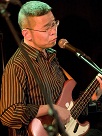 At age 20, Suzuki began the bass and played for various people. Nowadays, he works for many bands and solo artists, performing both in lives and recording sessions. In May of 2008, he began work on his first solo album. For Yuki Kajiura, he played bass in the See-Saw song LOVE, and the song Lullaby (Japanese ver.) from the Noir blanc dans noir OST (aka Noir OST 3). He also played bass in the El Cazador OST 1, Mai-HIME OSTs 1 and 2, Noir OST 1, and the Xenosaga III OST. Official Site
At age 20, Suzuki began the bass and played for various people. Nowadays, he works for many bands and solo artists, performing both in lives and recording sessions. In May of 2008, he began work on his first solo album. For Yuki Kajiura, he played bass in the See-Saw song LOVE, and the song Lullaby (Japanese ver.) from the Noir blanc dans noir OST (aka Noir OST 3). He also played bass in the El Cazador OST 1, Mai-HIME OSTs 1 and 2, Noir OST 1, and the Xenosaga III OST. Official Site
Drums
Nozaki, Masuke (real name: Nozaki Shinsuke) ☆
野崎真助 Born December 10, 1975
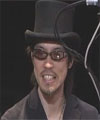 Nozaki Shinsuke is a Japanese drummer who graduated from Kanazawa Izumigaoka High School in Ishikawa prefecture. He is nicknamed “Masuke” in the music world. His younger brother, Nozaki Morio, is also a musician, a bassist. Some artists Nozaki has worked with in live performances are aiko, Takahashi Katsunori, day after tomorrow, and Fujii Takashi, and in recordings with Ayaka, Ganaha Mina, Kinki Kids and TM Revolution. With Yuki Kajiura he has played drums for the FJY albums “Destination” and “circus” , for Saeko Chiba’s albums “Melody” and “Everything” as well as for Kalafina’s sprinter/ARIA single. Nozaki has also played in various Yuki Kajiura soundtracks like Tsubasa Chronicle Future Soundscapes I-IV, Madlax OST 1-2, Mai-Hime and Otome OSTs 1, 2, Le Portrait de Petit Cossette, and Pandora Hearts OST 1-2. Nozaki has also participated in the FJY Premium Live 2007, Yuki Kajiura live vol 1 and 4 concerts, plus several Kalafina lives.
Nozaki Shinsuke is a Japanese drummer who graduated from Kanazawa Izumigaoka High School in Ishikawa prefecture. He is nicknamed “Masuke” in the music world. His younger brother, Nozaki Morio, is also a musician, a bassist. Some artists Nozaki has worked with in live performances are aiko, Takahashi Katsunori, day after tomorrow, and Fujii Takashi, and in recordings with Ayaka, Ganaha Mina, Kinki Kids and TM Revolution. With Yuki Kajiura he has played drums for the FJY albums “Destination” and “circus” , for Saeko Chiba’s albums “Melody” and “Everything” as well as for Kalafina’s sprinter/ARIA single. Nozaki has also played in various Yuki Kajiura soundtracks like Tsubasa Chronicle Future Soundscapes I-IV, Madlax OST 1-2, Mai-Hime and Otome OSTs 1, 2, Le Portrait de Petit Cossette, and Pandora Hearts OST 1-2. Nozaki has also participated in the FJY Premium Live 2007, Yuki Kajiura live vol 1 and 4 concerts, plus several Kalafina lives.
Official Site
Numazawa, Takashi
沼澤 尚 Born April 19, 1966
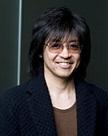 After graduating from college, Takashi Numazawa went to L.A. to study at the music school PIT (Percussion Institute of Technology), studying under people such as Joe Porcaro and Ralph Humphrey, and soon becoming accepted as a lecturer in the same school. There, he appeared with many local artists; began performing in the club scene; participated in Chaka Khan’s 1986 tour and Bobby Womack’s 1987 tour; and travelled with the latter on his first visit to Japan. Since then, he’s played for more than 70 separate artists and bands. For Yuki Kajiura, he played drums in the song Forest from the El Cazador de la Bruja OST, as well as the Kaori Oda single “Calling”. He also contributed percussion to the See-Saw album “Early Best”.
After graduating from college, Takashi Numazawa went to L.A. to study at the music school PIT (Percussion Institute of Technology), studying under people such as Joe Porcaro and Ralph Humphrey, and soon becoming accepted as a lecturer in the same school. There, he appeared with many local artists; began performing in the club scene; participated in Chaka Khan’s 1986 tour and Bobby Womack’s 1987 tour; and travelled with the latter on his first visit to Japan. Since then, he’s played for more than 70 separate artists and bands. For Yuki Kajiura, he played drums in the song Forest from the El Cazador de la Bruja OST, as well as the Kaori Oda single “Calling”. He also contributed percussion to the See-Saw album “Early Best”.
Official Site
Sato, Kyoichi ☆
佐藤強一 Born 1962
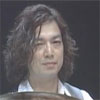 Kyoichi Sato is a drummer and guitarist. During his career he’s done various recordings and live and TV performances, and also is a member of the Suzy Cream Cheese and West&Sugar bands. While working with Yuki Kajiura he played drums in See-Saw’s “Dream Field” album and Edge/Tasogare no Umi single, as well as in Saeko Chiba’s albums “Everything” and “Melody”, and FictionJunction YUUKA’s “Destination” and “circus”. He has also played in soundtracks such as Noir OST 1, Mai Hime OST 2, Hokuto no Ken OST, El Cazador OST 2, and Kara no Kyoukai OST 3. Moreover, he’s played in numerous Kalafina and Yuki Kajiura lives and is a regular drummer at Animelo Summer Live concerts.
Kyoichi Sato is a drummer and guitarist. During his career he’s done various recordings and live and TV performances, and also is a member of the Suzy Cream Cheese and West&Sugar bands. While working with Yuki Kajiura he played drums in See-Saw’s “Dream Field” album and Edge/Tasogare no Umi single, as well as in Saeko Chiba’s albums “Everything” and “Melody”, and FictionJunction YUUKA’s “Destination” and “circus”. He has also played in soundtracks such as Noir OST 1, Mai Hime OST 2, Hokuto no Ken OST, El Cazador OST 2, and Kara no Kyoukai OST 3. Moreover, he’s played in numerous Kalafina and Yuki Kajiura lives and is a regular drummer at Animelo Summer Live concerts.
Official Site
Suganuma, Kozo
菅沼孝三 Birthdate unknown
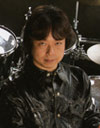 A native of Osaka, Japan, Kozo Suganuma began playing drums at the age of eight. At the age of ten he appeared on several Japanese TV shows as the Genius Kid Drummer. He became a professional drummer at the age of fifteen and has done many studio recordings and concerts tours.He runs his drum school, Kozo Suganuma Drum Dojo at 6 places in Japan. Because of his amazing technique, Kozo has been given the name “The king of many strokes TE KA ZU OH”. He has been played with many artists from Japan, America, and other countries. Kozo is also an extemely active drum clinician since not only does drum clinics all over Japan but in the abroad too. Apart from CDs, he has released instructional videos, DVDs, and books. While working with Yuki, he played in the songs “cynical world”, “fiction”, and “vanity” of her solo album “Fiction”.
A native of Osaka, Japan, Kozo Suganuma began playing drums at the age of eight. At the age of ten he appeared on several Japanese TV shows as the Genius Kid Drummer. He became a professional drummer at the age of fifteen and has done many studio recordings and concerts tours.He runs his drum school, Kozo Suganuma Drum Dojo at 6 places in Japan. Because of his amazing technique, Kozo has been given the name “The king of many strokes TE KA ZU OH”. He has been played with many artists from Japan, America, and other countries. Kozo is also an extemely active drum clinician since not only does drum clinics all over Japan but in the abroad too. Apart from CDs, he has released instructional videos, DVDs, and books. While working with Yuki, he played in the songs “cynical world”, “fiction”, and “vanity” of her solo album “Fiction”.
Official Site
Yamaki, Hideo
山木秀夫 Born December 22, 1952 (in Kumamoto)
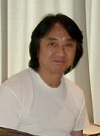 Thanks to his father, Hideo Yamaki was influenced by jazz and tango music even when in kindergarten. In his first year of middle school, he bought a drum set and put together a band, covering songs from the Beatles and the Rolling Stones. At 16 he journeyed to Okinawa, which at that time was under American jurisdiction, and began working in clubs and on the radio. He met Hideo Ichigawa in 1974, and moved back to Tokyo to join Ichigawa’s trio. Continuing to appear with many other musicians until ’78, Yamaki formed the group “Maria” with three others; through the ’80s and ’90s he worked steadily, releasing two albums in the early ’90s. He released his third and fourth albums in 2002 and 2003 respectively, and formed the special unit “gym”, which also released an album. He has also worked in the studio for many artists, including B’z, Miyuki Nakajima, Fumiya Fujii, and Akemi Inoue. For Yuki Kajiura, he played drums in the See-Saw song “Senya Ichiya” and the EAT-MAN and Boogiepop and Others OSTs (in The Works for Soundtrack collection).
Thanks to his father, Hideo Yamaki was influenced by jazz and tango music even when in kindergarten. In his first year of middle school, he bought a drum set and put together a band, covering songs from the Beatles and the Rolling Stones. At 16 he journeyed to Okinawa, which at that time was under American jurisdiction, and began working in clubs and on the radio. He met Hideo Ichigawa in 1974, and moved back to Tokyo to join Ichigawa’s trio. Continuing to appear with many other musicians until ’78, Yamaki formed the group “Maria” with three others; through the ’80s and ’90s he worked steadily, releasing two albums in the early ’90s. He released his third and fourth albums in 2002 and 2003 respectively, and formed the special unit “gym”, which also released an album. He has also worked in the studio for many artists, including B’z, Miyuki Nakajima, Fumiya Fujii, and Akemi Inoue. For Yuki Kajiura, he played drums in the See-Saw song “Senya Ichiya” and the EAT-MAN and Boogiepop and Others OSTs (in The Works for Soundtrack collection).
Official Site
Percussion
Fujii, Tamao
藤井珠緒 Birthdate unknown
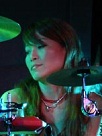 Tamao Fujii started the marimba at age 4. While pursuing academic studies at Touhou Academy, she played various styles of music from delicate work to hard grooves. In 1996, she released a singing album, “Talking Marimba”. Presently, she performs in various artists’ recordings and lives, as well as doing studio work for movies and TV. Serving as a member of Ikuo Kakehashi’s percussion ensemble, Fujii experiments with various types of percussion instruments. For Yuki Kajiura, she’s done percussion in the Achilles to Kame movie OST, the song “Hanamori no Oka” from the FictionJunction album “Everlasting Songs”, the Mai-Hime OST 2 and both Mai-Otome OSTs, the Xenosaga III OST, the El Cazador de la Bruja OST 1-2, the Kalafina single “Hikari no Senritsu”, the Kara no Kyoukai Music Collection, and the Puella Magi Madoka Magica OST 1.
Tamao Fujii started the marimba at age 4. While pursuing academic studies at Touhou Academy, she played various styles of music from delicate work to hard grooves. In 1996, she released a singing album, “Talking Marimba”. Presently, she performs in various artists’ recordings and lives, as well as doing studio work for movies and TV. Serving as a member of Ikuo Kakehashi’s percussion ensemble, Fujii experiments with various types of percussion instruments. For Yuki Kajiura, she’s done percussion in the Achilles to Kame movie OST, the song “Hanamori no Oka” from the FictionJunction album “Everlasting Songs”, the Mai-Hime OST 2 and both Mai-Otome OSTs, the Xenosaga III OST, the El Cazador de la Bruja OST 1-2, the Kalafina single “Hikari no Senritsu”, the Kara no Kyoukai Music Collection, and the Puella Magi Madoka Magica OST 1.
Kakehashi, Ikuo
梯郁夫 Birthdate unknown
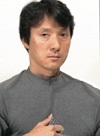 Ikuo Kakehashi is a percussionist. He has played in a wide variety of music, from the Princess Mononoke Image Album to the D.N.Angel OST, as a member of Yoko Kanno’s “The Seatbelts”, he provided percussion for the Cowboy Bebop OST as well. He has also worked with Joe Hisaishi, performing in his albums Sonatine and Asian X.T.C. Throughout his performances, he displays a wide range of percussion styles from traditional to cultural. For Yuki Kajiura, he played percussion in the See-Saw song “Kioku”, FictionJunction YUUKA’s “Kouya Ruten” as well as several songs from her album “Destination”, FictionJunction’s album “Everlasting Songs”, Yuki Kajiura’s two solo albums “Fiction” and Fiction II”, the .hack//SIGN OST II, the Madlax OSTs I-II, the Mai-Hime OST I, The Velveteen Rabbit OST, all four Tsubasa Chronicle Future Soundscapes, both the Xenosaga II and III OSTs, the Elemental Gelade OST I-II, the Hokuto no Ken OST, and the Le Portrait de Petit Cossette OST.
Ikuo Kakehashi is a percussionist. He has played in a wide variety of music, from the Princess Mononoke Image Album to the D.N.Angel OST, as a member of Yoko Kanno’s “The Seatbelts”, he provided percussion for the Cowboy Bebop OST as well. He has also worked with Joe Hisaishi, performing in his albums Sonatine and Asian X.T.C. Throughout his performances, he displays a wide range of percussion styles from traditional to cultural. For Yuki Kajiura, he played percussion in the See-Saw song “Kioku”, FictionJunction YUUKA’s “Kouya Ruten” as well as several songs from her album “Destination”, FictionJunction’s album “Everlasting Songs”, Yuki Kajiura’s two solo albums “Fiction” and Fiction II”, the .hack//SIGN OST II, the Madlax OSTs I-II, the Mai-Hime OST I, The Velveteen Rabbit OST, all four Tsubasa Chronicle Future Soundscapes, both the Xenosaga II and III OSTs, the Elemental Gelade OST I-II, the Hokuto no Ken OST, and the Le Portrait de Petit Cossette OST.
Kimura, Akira
木村誠 Born September 10, 1954
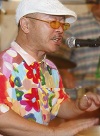 Akira Kimura began playing percussion instruments at 20, and since then has been constantly active as a stage musician. Performing both in recordings and concerts for many artists, including Carlos Santana in 1981, he’s become relatively famous as a percussionist. For Yuki Kajiura, Kimura played percussion in the song “Camomile Tea” and the Tokyo Kyoudai OST, both in The Works for Soundtrack.
Akira Kimura began playing percussion instruments at 20, and since then has been constantly active as a stage musician. Performing both in recordings and concerts for many artists, including Carlos Santana in 1981, he’s become relatively famous as a percussionist. For Yuki Kajiura, Kimura played percussion in the song “Camomile Tea” and the Tokyo Kyoudai OST, both in The Works for Soundtrack.
Misawa, Mataro (real name: Misawa Seiji)
三沢”またろう”成樹 Born October 23, 1960 (in Tomakomai, Hokkaido)
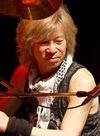 Seiji Misawa took his stage name “Mataro” in senior high school, after reading the manga “Mataro ga kuru!!”. In the percussion department of the Tokyo College of Music, he studied classic percussion instruments such as the timpani, the marimba and the glockenspiel in depth, as well as Latin instruments such as the bongos; eventually he became a non-genre musician, creating original arrangements, and maintains that he cannot actually capture a certain genre in performances. Mataro has played for Akemi Inoue, Miyuki Nakajima, Keisuke Kuwada, Masayuki Suzuki, Shinji Harada, aiko, and Arashi, among many others, and is also part of the bands “J.A.M”, “Tokyo Mandes” and “The Rhythm Kings”. His younger sister Izumi Misawa is also a percussionist. For Yuki Kajiura, he did all percussion in the Noir OST 2, the .hack//SIGN OST 1 and .hack//EXTRA OST, the Mai-Hime OST 1, several songs from the See-Saw album “Dream Field”, and several songs from the Kalafina album “After Eden”.
Seiji Misawa took his stage name “Mataro” in senior high school, after reading the manga “Mataro ga kuru!!”. In the percussion department of the Tokyo College of Music, he studied classic percussion instruments such as the timpani, the marimba and the glockenspiel in depth, as well as Latin instruments such as the bongos; eventually he became a non-genre musician, creating original arrangements, and maintains that he cannot actually capture a certain genre in performances. Mataro has played for Akemi Inoue, Miyuki Nakajima, Keisuke Kuwada, Masayuki Suzuki, Shinji Harada, aiko, and Arashi, among many others, and is also part of the bands “J.A.M”, “Tokyo Mandes” and “The Rhythm Kings”. His younger sister Izumi Misawa is also a percussionist. For Yuki Kajiura, he did all percussion in the Noir OST 2, the .hack//SIGN OST 1 and .hack//EXTRA OST, the Mai-Hime OST 1, several songs from the See-Saw album “Dream Field”, and several songs from the Kalafina album “After Eden”.
Official Site
Nakajima, Obawo ☆
中島オバヲ Born September 3, 1960
 Obawo Nakajima is a percussionist. He began learning percussion at the age of 19, and was a support musician in the band Rebecca, of which Koichi Korenaga (guitar) and Yutaka Odawara (drums) were also members. He has performed in recordings and concerts for artists such as Ruriko Kuboh, Mika Nakajima, Ichiro Hada, and AMAZONS. For Yuki Kajiura, Nakajima played percussion in the Shin Kimagure Orange Road and Eat-Man OSTs.
Obawo Nakajima is a percussionist. He began learning percussion at the age of 19, and was a support musician in the band Rebecca, of which Koichi Korenaga (guitar) and Yutaka Odawara (drums) were also members. He has performed in recordings and concerts for artists such as Ruriko Kuboh, Mika Nakajima, Ichiro Hada, and AMAZONS. For Yuki Kajiura, Nakajima played percussion in the Shin Kimagure Orange Road and Eat-Man OSTs.
Official Site | Official Blog | Twitter account
Ooishi, Marie
大石まりえ Birthdate unknown
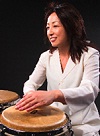 Marie Ooishi originally remembers playing the piano and singing when very young, but even then she harbored an interest in the marimba, a percussion instrument. By the 1980s, she was studying percussion at a senior high school affiliated with the Tokyo University of Arts and Music; at that time, she also made her singing debut with Crown Records, releasing an album of her own compositions and performing live on television, and performed with two bands. By 1990 she began work as a studio musician, and did tour support for artists such as Watabe Miri and Mr. Children. She has continued to perform regularly since then, for countless artists and shows, and in 2005 directed and starred in the show “MARIE OOISHI PRESENTS ‘Jounetsu no odori to yasashii uta'”. For Yuki Kajiura, Ooishi did percussion in the Elemental Gelade React Re-No 1 (the second OST).
Marie Ooishi originally remembers playing the piano and singing when very young, but even then she harbored an interest in the marimba, a percussion instrument. By the 1980s, she was studying percussion at a senior high school affiliated with the Tokyo University of Arts and Music; at that time, she also made her singing debut with Crown Records, releasing an album of her own compositions and performing live on television, and performed with two bands. By 1990 she began work as a studio musician, and did tour support for artists such as Watabe Miri and Mr. Children. She has continued to perform regularly since then, for countless artists and shows, and in 2005 directed and starred in the show “MARIE OOISHI PRESENTS ‘Jounetsu no odori to yasashii uta'”. For Yuki Kajiura, Ooishi did percussion in the Elemental Gelade React Re-No 1 (the second OST).
Official Site
Takada, Midori
高田みどり Born December 21, 1951 (in Tokyo metropolitan area)
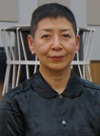 Midori Takada graduated from the Tokyo University of Arts and Music, and in 1977 took third prize in the percussion category of the Munich International Music Concours. She soon afterward debuted as a soloist in the Berlin Radio Symphony, and afterwards began performing solo in Asia, America and other countries; nowadays, she collaborates with artists from many genres and countries. For Yuki Kajiura, she did percussion in the Hokuto no Ken OST.
Midori Takada graduated from the Tokyo University of Arts and Music, and in 1977 took third prize in the percussion category of the Munich International Music Concours. She soon afterward debuted as a soloist in the Berlin Radio Symphony, and afterwards began performing solo in Asia, America and other countries; nowadays, she collaborates with artists from many genres and countries. For Yuki Kajiura, she did percussion in the Hokuto no Ken OST.
Flute
Akagi, Rie ☆
赤木りえ Birthdate unknown
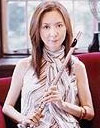 Rie Akagi is a popular recording artist, arranger, composer, and performer, who is recognized as one of the leading jazz flutists in Japan. Born into a musical family, she began piano studies at age 5 and flute studies at age 9. During her university years she developed a strong interest in various styles of music. She has had numerous performances and appearances on radio and TV in addition to her regular touring schedule. She has performed with artists such as Tito Puente, Chevere, Poncho Sanchez Group, Makinto and has participated in many international jazz festivals and Latin music festivals. She has already produced 10 of her personal recordings since 1984.
Rie Akagi is a popular recording artist, arranger, composer, and performer, who is recognized as one of the leading jazz flutists in Japan. Born into a musical family, she began piano studies at age 5 and flute studies at age 9. During her university years she developed a strong interest in various styles of music. She has had numerous performances and appearances on radio and TV in addition to her regular touring schedule. She has performed with artists such as Tito Puente, Chevere, Poncho Sanchez Group, Makinto and has participated in many international jazz festivals and Latin music festivals. She has already produced 10 of her personal recordings since 1984.
While working with Yuki kajiura she performed in albums such as See-Saw’s Dream Field, Chiba Saeko’s Everything and Melody, FictionJunction YUUKA’s circus, and in soundtracks such as .hack//SIGN OST 1, .hack//Liminality OST 1, Noir Blanc Dans Noir, Madlax OST 1 and 2, El Cazador OST 1, Tsubasa Chronicle Future Soundscape I-III, Elemental Gerad OST 1 and 2, and Mai-Otome OST 1. Recently, she is confirmed to be performing as a guest musician for the coming Live vol.7 “Fiction”. She’s been guest flutist on both Yuki Kajiura Live vol.6 (May 16, 2010 concert) and Yuki Kajiura Live vol.7.
Official Site
Asahi, Takashi
旭孝 Born May 5, 1940 (in Kyoto)
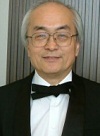 Takashi Asahi first began self-studying the flute at the suggestion of his middle school teacher and went on to attend a Kyoto music university, receiving guidance from several famous flutists. He joined the Osaka Music Orchestra after graduation, but moved to the Kansai Orchestra after only nine months. After playing in the first performance of Kousaku Yamada’s opera “Kurofune”, Asahi moved on to the Tokyo Orchestra; he also performed many times on the NHK-FM’s classics radio program, and was playing as a studio musician by 1970. Recently he’s been playing for anime, dramas, movies and commercials, as well as performing in concerts. When playing in the studio, he performs also on the recorder, ocarina, pan pipes, tin whistle, bamboo flute, and the quena, among other wind instruments. For Yuki Kajiura, Asahi played both flute and quena in the Achilles to Kame OST, the El Cazador de la Bruja OST 1 and 2, the Hokuto no Ken OST, and the Kalafina song “Natsu no Ringo”.
Takashi Asahi first began self-studying the flute at the suggestion of his middle school teacher and went on to attend a Kyoto music university, receiving guidance from several famous flutists. He joined the Osaka Music Orchestra after graduation, but moved to the Kansai Orchestra after only nine months. After playing in the first performance of Kousaku Yamada’s opera “Kurofune”, Asahi moved on to the Tokyo Orchestra; he also performed many times on the NHK-FM’s classics radio program, and was playing as a studio musician by 1970. Recently he’s been playing for anime, dramas, movies and commercials, as well as performing in concerts. When playing in the studio, he performs also on the recorder, ocarina, pan pipes, tin whistle, bamboo flute, and the quena, among other wind instruments. For Yuki Kajiura, Asahi played both flute and quena in the Achilles to Kame OST, the El Cazador de la Bruja OST 1 and 2, the Hokuto no Ken OST, and the Kalafina song “Natsu no Ringo”.
Fukui “eLio” Eriko
福井恵利子 Birthdate unknown
 At age 13, Eriko Fukui began to study the flute on her own. After graduating from the musicology department of Touhou Academy, she traveled to Belgium and graduated with top marks from the Royal Music Institution while acquiring the capability to perform in any country. Registering as an artist in the Belgium Music Management Company in 2006, she was invited to a music recital and appeared on magazine covers, gaining popularity all the while. At that time she mingled with the fashion industry in Antwerp, beginning to work in its jazz and club music scene. While releasing her first album “eliodarc” in 2007, she moved her center of operations to Tokyo and began performing as a flutist and model, and has played flute in the Okami Kakushi OST. For Yuki Kajiura, she played flute in the Kalafina song “Storia” and the Rekishi Hiwa Historia OST 1.
At age 13, Eriko Fukui began to study the flute on her own. After graduating from the musicology department of Touhou Academy, she traveled to Belgium and graduated with top marks from the Royal Music Institution while acquiring the capability to perform in any country. Registering as an artist in the Belgium Music Management Company in 2006, she was invited to a music recital and appeared on magazine covers, gaining popularity all the while. At that time she mingled with the fashion industry in Antwerp, beginning to work in its jazz and club music scene. While releasing her first album “eliodarc” in 2007, she moved her center of operations to Tokyo and began performing as a flutist and model, and has played flute in the Okami Kakushi OST. For Yuki Kajiura, she played flute in the Kalafina song “Storia” and the Rekishi Hiwa Historia OST 1.
Official Blog | Twitter account |
Takakuwa, Hideyo
髙桑英世 Birthdate unknown
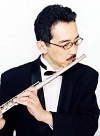 Hideyo Takakuwa graduated from a prestigious Tokyo music university, and has made many appearances at Tokyo-area music festivals. As a member of Katsuji Hattori’s pops orchestra, he performed in New York at the U.N. Headquarters and also at Carnegie Hall; he also performed for seven years with composer Mise Jounouchi, and has recorded for TV, film, and CDs. Aside from the flute, Takakuwa can also play the piccolo, the alto and bass flute, the bamboo flute, the recorder, the ocarina, and the tin whistle. For Yuki Kajiura, he played flute in the Saeko Chiba single “hikari”, the Xenosaga III OST, and the Kara no Kyoukai Music Collection.
Hideyo Takakuwa graduated from a prestigious Tokyo music university, and has made many appearances at Tokyo-area music festivals. As a member of Katsuji Hattori’s pops orchestra, he performed in New York at the U.N. Headquarters and also at Carnegie Hall; he also performed for seven years with composer Mise Jounouchi, and has recorded for TV, film, and CDs. Aside from the flute, Takakuwa can also play the piccolo, the alto and bass flute, the bamboo flute, the recorder, the ocarina, and the tin whistle. For Yuki Kajiura, he played flute in the Saeko Chiba single “hikari”, the Xenosaga III OST, and the Kara no Kyoukai Music Collection.
Official Site
Wakamatsu, Junko
若松純子 Birthdate unknown
 Junko Wakamatsu graduated from Touhou University, and in 1991 took second place in the Japan Flute Convention competition as well as second place in a Japan wind instrument competition. The following year, she took second place in another contest, and won a fourth. Since then she’s apprenticed under various flutists and continued to study. Presently, she plays both solo and in orchestras. For Yuki Kajiura, she played flute in the Noir OST 2.
Junko Wakamatsu graduated from Touhou University, and in 1991 took second place in the Japan Flute Convention competition as well as second place in a Japan wind instrument competition. The following year, she took second place in another contest, and won a fourth. Since then she’s apprenticed under various flutists and continued to study. Presently, she plays both solo and in orchestras. For Yuki Kajiura, she played flute in the Noir OST 2.
Saxophone
Honda, Masato
本田雅人 Born November 13,1962
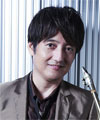 Influenced by his parents, he started playing sax when he was in the third year of elementary school, and belonged to a jazz orchestra when he was in Kunitachi College of Music. He made his debut at Yamano Big Band Jazz Contest and won an award for the best soloist. After graduation, as a recording musician, he participated in the works of many musicians, while supporting the tours of Japanese top artists. In 1998 he started his career as a solo musician after leaving T-SQUARE. Besides a band under his name, he worked for projects such as “Witness”, “B.B.Station”, “Four of a kind”, ”Voice of Elements”, etc. He also arranged and produced a collaboration album with Marlene, and in 2008, he collaborated with Bob James in recording for his own 8th album.
Influenced by his parents, he started playing sax when he was in the third year of elementary school, and belonged to a jazz orchestra when he was in Kunitachi College of Music. He made his debut at Yamano Big Band Jazz Contest and won an award for the best soloist. After graduation, as a recording musician, he participated in the works of many musicians, while supporting the tours of Japanese top artists. In 1998 he started his career as a solo musician after leaving T-SQUARE. Besides a band under his name, he worked for projects such as “Witness”, “B.B.Station”, “Four of a kind”, ”Voice of Elements”, etc. He also arranged and produced a collaboration album with Marlene, and in 2008, he collaborated with Bob James in recording for his own 8th album.
He works in many fields including session with various musicians, recording, arrangement, producing etc. Masato Honda’s skill with the flute, soprano sax, alto sax, baritone sax, tenor saxophone, and Electric Wind Instruments is what he is recognized for. With Yuki, he played his saxophone in both Pandora Hearts OSTs and on Fiction Junction’s Hitorigoto.
Official Site | Twitter account
Kaneko, Takahiro
金子隆博 Born March 22, 1964 (in Chiba-ken)
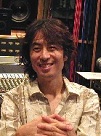 Takahiro Kaneko studied science and technology at the University of Japan, beginning the saxophone during his student days and playing for various bands. In 1984, he formed the horn section “Street Fighters”, which participated in KomeKome CLUB lives and from then on did other live support as well as recordings. Afterward, “Street Fighters” changed their name to “BIG HORNS BEE”. They became an official member of KomeKome CLUB in 1987; there, Kaneko worked with arrangements, and until their breakup in ’97, became the main member in charge of music works. “BIG HORNS BEE” continued to perform after KomeKome CLUB’s breakup, releasing a single titled “Komekura Toshiki with BIG HORNS BEE” and collaborating with many artists. Personally, Kaneko worked in composition, performances and arrangements with artists such as Tatsuya Ishii, Fukashi Issei, Kenji Hirai, and Mika Nakajima. Otherwise, after winning the musical prize for the movie “Kappa”, he began composing more music for other films and plays. For Yuki Kajiura, he played saxophone and flute in the Mai-Hime OST 1, and saxophone in the Tsubasa Chronicle Future Soundscape I and II.
Takahiro Kaneko studied science and technology at the University of Japan, beginning the saxophone during his student days and playing for various bands. In 1984, he formed the horn section “Street Fighters”, which participated in KomeKome CLUB lives and from then on did other live support as well as recordings. Afterward, “Street Fighters” changed their name to “BIG HORNS BEE”. They became an official member of KomeKome CLUB in 1987; there, Kaneko worked with arrangements, and until their breakup in ’97, became the main member in charge of music works. “BIG HORNS BEE” continued to perform after KomeKome CLUB’s breakup, releasing a single titled “Komekura Toshiki with BIG HORNS BEE” and collaborating with many artists. Personally, Kaneko worked in composition, performances and arrangements with artists such as Tatsuya Ishii, Fukashi Issei, Kenji Hirai, and Mika Nakajima. Otherwise, after winning the musical prize for the movie “Kappa”, he began composing more music for other films and plays. For Yuki Kajiura, he played saxophone and flute in the Mai-Hime OST 1, and saxophone in the Tsubasa Chronicle Future Soundscape I and II.
Takeda, Kazuhiro
武田和大 Born September 19, 1967 (in Tokyo)
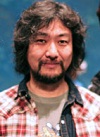 Kazuhiro Takeda is a saxophonist, flutist and clarinetist as well as an arranger and composer. He performed in Boston, Mass. with the George Russell orchestra in 1990, and upon returning to Japan, began to perform randomly with many groups such as the saxophone group QUADRA. He has since performed with Jazztronik, Akiko Wada, and B’z, among others. In 2011, he organized the movement “Gakki (instruments) for Kids” in order to give musical instruments to children affected by the earthquake disaster. For Yuki Kajiura, he played saxophone in the .hack//SIGN OST 2 and the Hokuto no Ken OST.
Kazuhiro Takeda is a saxophonist, flutist and clarinetist as well as an arranger and composer. He performed in Boston, Mass. with the George Russell orchestra in 1990, and upon returning to Japan, began to perform randomly with many groups such as the saxophone group QUADRA. He has since performed with Jazztronik, Akiko Wada, and B’z, among others. In 2011, he organized the movement “Gakki (instruments) for Kids” in order to give musical instruments to children affected by the earthquake disaster. For Yuki Kajiura, he played saxophone in the .hack//SIGN OST 2 and the Hokuto no Ken OST.
Official Site
Yaguchi, Hiroyasu
矢口博康 Born April 23, 1958
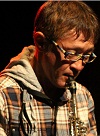 Hiroyasu Yaguchi formed the group “Real Fish” in 1981, which released 3 albums, one of which was a 12-inch single. In 2000 Yaguchi formed another group, which also released 3 albums but broke up soon after. His current group “Gastronomics” was formed in 2009. He has also released solo albums; worked as an arranger and saxophone player for various artists; and also supervised the music for the 2006 film “100% Wool”. For Yuki Kajiura, he played saxophone in the Noir OST 2, the Mai-Otome OST 2, the Mai-Otome Best Collection, and the El Cazador de la Bruja OST 1.
Hiroyasu Yaguchi formed the group “Real Fish” in 1981, which released 3 albums, one of which was a 12-inch single. In 2000 Yaguchi formed another group, which also released 3 albums but broke up soon after. His current group “Gastronomics” was formed in 2009. He has also released solo albums; worked as an arranger and saxophone player for various artists; and also supervised the music for the 2006 film “100% Wool”. For Yuki Kajiura, he played saxophone in the Noir OST 2, the Mai-Otome OST 2, the Mai-Otome Best Collection, and the El Cazador de la Bruja OST 1.
Official Site | Twitter account
Yamamoto, Takuo
山本拓夫 Birthdate unknown
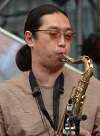 Takuo Yamamoto performs in lives and recordings with a broad and flexible sense of genre, playing energetically for many artists; over the years he’s performed for many sessions in Japan’s music scene, both as a many-layered soloist and a section player. He also works as an arranger and producer, and it’s said that his all-round technique always produces fresh sounds. For Yuki Kajiura, he played saxophone in the See-Saw album “Early Best”, the .hack//Liminality OST and the Madlax OST 2.
Takuo Yamamoto performs in lives and recordings with a broad and flexible sense of genre, playing energetically for many artists; over the years he’s performed for many sessions in Japan’s music scene, both as a many-layered soloist and a section player. He also works as an arranger and producer, and it’s said that his all-round technique always produces fresh sounds. For Yuki Kajiura, he played saxophone in the See-Saw album “Early Best”, the .hack//Liminality OST and the Madlax OST 2.
Official Site
Flugel Horn
Sasaki, Shiro
佐々木史郎 Born 1962 (in Tokyo)
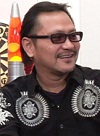 While enrolled in Musashino Music University, Shiro Sasaki studied jazz, and began performing in various ensembles after graduation. As lead trumpeter in the Orchestra Del Sol, he has performed in overseas tours more than fifteen times; he has apparently been nominated for a Grammy and has also performed on the Tonight Show. Among others, he has played for artists such as B’z, Chicago, and Santana. Presently he works as a studio musician. For Yuki Kajiura, he played the flugel horn, a brass instrument, in the Tsubasa Chronicles Future Soundscape IV.
While enrolled in Musashino Music University, Shiro Sasaki studied jazz, and began performing in various ensembles after graduation. As lead trumpeter in the Orchestra Del Sol, he has performed in overseas tours more than fifteen times; he has apparently been nominated for a Grammy and has also performed on the Tonight Show. Among others, he has played for artists such as B’z, Chicago, and Santana. Presently he works as a studio musician. For Yuki Kajiura, he played the flugel horn, a brass instrument, in the Tsubasa Chronicles Future Soundscape IV.
Twitter account
Bag Pipes
Yamane, Atsuji
山根篤 Birthdate unknown
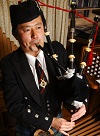 Atsuji Yamane was always fascinated by instruments with different tone qualities. When he was 19 years old, his father enrolled him in the Tokyo Piping Society; from then on he studied the bagpipes both at home and abroad in Glasgow, Scotland, rubbing shoulders with many fellow pipers around the world. Currently, he’s been performing throughout Japan in collaborations with different bands, and says “the bagpipes have a power that makes your friends gather round.” For Yuki Kajiura, Yamane played the bagpipes in the Noir OST 2.
Atsuji Yamane was always fascinated by instruments with different tone qualities. When he was 19 years old, his father enrolled him in the Tokyo Piping Society; from then on he studied the bagpipes both at home and abroad in Glasgow, Scotland, rubbing shoulders with many fellow pipers around the world. Currently, he’s been performing throughout Japan in collaborations with different bands, and says “the bagpipes have a power that makes your friends gather round.” For Yuki Kajiura, Yamane played the bagpipes in the Noir OST 2.
Uillean Pipes
Nakahara Naomi ☆
中原直生 Birthdate unknown
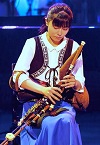 Nakahara Naomi was born in Shimonoseki in Yamaguchi Prefecture. She had discovered Irish dance in elementary school and was drawn to the music, so began playing the whistle and uilleann pipes. She graduated from the Department of Musicology at the Tokyo University of the Arts. During university, she founded the Intercollegiate Celtic Festival (ICF), a 3-day music and dance event for Irish music lovers, and served as its representative for 3 years. She released 2 CDs with her harp-playing partner in the group, Namaume. Also, as a member of the Irish band “LADY Chieftains”, she performed with the Irish national treasure band “The Chieftains”, who came to Japan on tour to celebrate their 50th anniversary.
Nakahara Naomi was born in Shimonoseki in Yamaguchi Prefecture. She had discovered Irish dance in elementary school and was drawn to the music, so began playing the whistle and uilleann pipes. She graduated from the Department of Musicology at the Tokyo University of the Arts. During university, she founded the Intercollegiate Celtic Festival (ICF), a 3-day music and dance event for Irish music lovers, and served as its representative for 3 years. She released 2 CDs with her harp-playing partner in the group, Namaume. Also, as a member of the Irish band “LADY Chieftains”, she performed with the Irish national treasure band “The Chieftains”, who came to Japan on tour to celebrate their 50th anniversary.
She has participated in various recordings, including the live-action film “Kiki’s Delivery Service,” and the TV anime “Saihate no Paladin.” She has also participated in several soundtrack-themed lives including for “Majo no Takkyuubin Original soundtrack”, “Hanako to Anne Original Soundtrack 1″ & 2” in 2015, and the “WORLD OF FINAL FANTASY OST” in 2016, where in addition to the uillean pipes, she played the tin whistle and low whistle.
With Yuki Kajiura she participated in the recording for the soundtrack of the NHK morning drama “Hanako and Anne,” and their first live collaboration was the LIVE vol #15 ~Soundtrack Special at the Amphitheater~ in June of 2020, and later she was part of the LIVE vol #16 Soundtrack Special at Osaka in 2021, and most recently was prominently featured at KajiFes 2023, Yuki Kajiura’s 30th anniversary concert.
She states on her Twitter that she also plays the piano, keyboard, and harmonica, though she has also played the tin whistle.
Official Blog | Twitter | YouTube
(thanks to CloisteredFlame for the help on Nakahara Naomi’s text!)
O’Sullivan, Jerry
Birthdate unknown
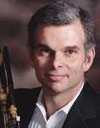 Jerry O’Sullivan was born in New York City to an Irish-American mother and a father from Dublin of Ireland. His melodic mastery, subtlety and expression of the instrument made him America’s premier uilleann piper. Jerry has appeared on more than 90 albums and has performed or recorded with many artists. He has also recorded a number of film soundtracks . Jerry has toured extensively in the United States and Europe and has even played as far afield as Japan and Israel. With Yuki he played uilleann pipes in her album Fiction (cynical world, open your heart, red rose) as well as in Xenosaga Episode III: Also Sprach Zarathustra Original Sound Best Tracks.
Jerry O’Sullivan was born in New York City to an Irish-American mother and a father from Dublin of Ireland. His melodic mastery, subtlety and expression of the instrument made him America’s premier uilleann piper. Jerry has appeared on more than 90 albums and has performed or recorded with many artists. He has also recorded a number of film soundtracks . Jerry has toured extensively in the United States and Europe and has even played as far afield as Japan and Israel. With Yuki he played uilleann pipes in her album Fiction (cynical world, open your heart, red rose) as well as in Xenosaga Episode III: Also Sprach Zarathustra Original Sound Best Tracks.
Official Site
Oboe
Hirota, Tomoka
広多智香 Born April 2
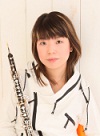 At the age of five, Tomoka Hirota was learning classical piano, but also played popular songs of her own accord. By junior high school she had begun learning the trumpet, and fell under the spell of wind instruments. In senior high, she was still playing trumpet, but also began the oboe; it would be no exaggeration to say that this choice had the most influence over her life, and she went on to study oboe both in college and at Touhou University. Throughout the 2000s she began to work as a studio musician, and has recently released an album, “Lotus”, under her stage name “tomoca”. For Yuki Kajiura, Hirota played oboe in the Mai-Hime OST 1 and the Tsubasa Chronicle Future Soundscape I. Official Site
At the age of five, Tomoka Hirota was learning classical piano, but also played popular songs of her own accord. By junior high school she had begun learning the trumpet, and fell under the spell of wind instruments. In senior high, she was still playing trumpet, but also began the oboe; it would be no exaggeration to say that this choice had the most influence over her life, and she went on to study oboe both in college and at Touhou University. Throughout the 2000s she began to work as a studio musician, and has recently released an album, “Lotus”, under her stage name “tomoca”. For Yuki Kajiura, Hirota played oboe in the Mai-Hime OST 1 and the Tsubasa Chronicle Future Soundscape I. Official Site
Harmonica
Nishiwaki, Tetsuya
西脇辰弥 Born July 28, 1964 (in Aichi-ken, Kariya city)
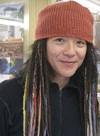 Tetsuya Nishiwaki began playing the piano at a very young age, and picked up composing by elementary school. He made his debut in 1987 with Sony Music Entertainment, as a member of the group Pazz; by the next year he had changed his focus to being a music producer, composer and arranger, and thereafter worked with many artists. Aside from playing keyboard, he also sings and plays guitar, bass, drums, percussion, koto and harmonica. His skill in playing jazz harmonica has been widely praised. For Yuki Kajiura, he played harmonica in the Elemental Gelade React Re-No 1 (the second OST).
Tetsuya Nishiwaki began playing the piano at a very young age, and picked up composing by elementary school. He made his debut in 1987 with Sony Music Entertainment, as a member of the group Pazz; by the next year he had changed his focus to being a music producer, composer and arranger, and thereafter worked with many artists. Aside from playing keyboard, he also sings and plays guitar, bass, drums, percussion, koto and harmonica. His skill in playing jazz harmonica has been widely praised. For Yuki Kajiura, he played harmonica in the Elemental Gelade React Re-No 1 (the second OST).
Official Site | Official Blog | Twitter account
Zampona (pan pipes)
Segi, Takamasa
瀬木貴将 Born June 29, 1966
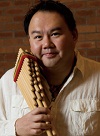 Takamasa Segi began self-studying the zampona (pan pipes) and quena at the age of 13; at 18 he traveled to Bolivia, in South America. In 1995 he made his solo debut with an album titled “Viento – Kaze no Michi”, and has since released 19 more albums. He has also performed in TV CMs, and for artists such as Arashi, Kazumi Watanabe and coba. His performances span the genres of rock, pop, jazz, New Age, classic, and traditional Japanese music. For Yuki Kajiura, Segi played the zampona in the Tokyo Kyoudai OST, from The Works for Soundtrack collection.
Takamasa Segi began self-studying the zampona (pan pipes) and quena at the age of 13; at 18 he traveled to Bolivia, in South America. In 1995 he made his solo debut with an album titled “Viento – Kaze no Michi”, and has since released 19 more albums. He has also performed in TV CMs, and for artists such as Arashi, Kazumi Watanabe and coba. His performances span the genres of rock, pop, jazz, New Age, classic, and traditional Japanese music. For Yuki Kajiura, Segi played the zampona in the Tokyo Kyoudai OST, from The Works for Soundtrack collection.
Official Site
Accordion
Goldstein, Gil
Born 1950
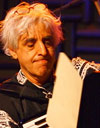 He began studying accordion at age 5, but later moved on to cello and piano. He studied at the Berklee College of Music and by 1973 was working with Pat Metheny, Lee Konitz, and others. He started with the Gil Evans Orchestra in the early 1980s and also worked with Wayne Shorter. He has also worked in films. He resumed doing occasional accordion work in the 1980s. Goldstein is credited with composing the music for the 1994 film Radio Inside. He has won three Grammy Awards two of which came from his production and arrangement credits for Michael Brecker’s Wide Angles album (2003). In 2007 he co-released an album Your Songs: The Music of Elton John. Goldstein is currently a professor at New York University. With Yuki he played accordion in the songs “canta per me” and “winter” of her album Fiction.
He began studying accordion at age 5, but later moved on to cello and piano. He studied at the Berklee College of Music and by 1973 was working with Pat Metheny, Lee Konitz, and others. He started with the Gil Evans Orchestra in the early 1980s and also worked with Wayne Shorter. He has also worked in films. He resumed doing occasional accordion work in the 1980s. Goldstein is credited with composing the music for the 1994 film Radio Inside. He has won three Grammy Awards two of which came from his production and arrangement credits for Michael Brecker’s Wide Angles album (2003). In 2007 he co-released an album Your Songs: The Music of Elton John. Goldstein is currently a professor at New York University. With Yuki he played accordion in the songs “canta per me” and “winter” of her album Fiction.
Kato, Kanako ☆
かとうかなこ Birthdate unknown
 Kanako Kato started the accordion at age 4, winning contests in both grade school and middle school, and began appearing on TV and radio while in grade school. After graduating senior high school, she went to France, studying the accordion for two years in Paris. Moreover, in order to regularly study, she traveled to a specialty accordion school in a certain region. Upon returning to Japan, she began writing original pieces, released in 2004 an ensemble album “Hidamari” with eleven other artists, and completed in 2007 a solo accordion album called “Dokusou”. Her aim is to continue playing accordion even if she’s over 80 years old. For Yuki Kajiura, she’s played accordion in the songs In This Winter and March from the album Fiction II. She was invited as guest musicians and played accordion in Yuki Kajiura Live vol #9 “Sound Track Special” concert (September 1, 2012 at New National Theatre Hall Tokyo).
Kanako Kato started the accordion at age 4, winning contests in both grade school and middle school, and began appearing on TV and radio while in grade school. After graduating senior high school, she went to France, studying the accordion for two years in Paris. Moreover, in order to regularly study, she traveled to a specialty accordion school in a certain region. Upon returning to Japan, she began writing original pieces, released in 2004 an ensemble album “Hidamari” with eleven other artists, and completed in 2007 a solo accordion album called “Dokusou”. Her aim is to continue playing accordion even if she’s over 80 years old. For Yuki Kajiura, she’s played accordion in the songs In This Winter and March from the album Fiction II. She was invited as guest musicians and played accordion in Yuki Kajiura Live vol #9 “Sound Track Special” concert (September 1, 2012 at New National Theatre Hall Tokyo).
Official Site | Official Blog | Twitter account
Kuwayama, Tetsuya
桑山哲也 Born April 13, 1972 (in Sapporo, Hokkaido)
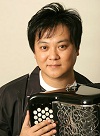 Tetsuya Kuwayama’s father, accordionist Mayumi Kuwayama, began to teach his son the accordion at age 6, and at 12 Tetsuya took first prize in an all-Japan accordion contest for children. When he was 14, he studied under a famous French accordionist, switching his focus to the button accordion at the same time and thoroughly studying the essence of French music; at 15 he once again took first prize in the all-Japan contest, going on to win the entire championship. At that time he began working as a professional, and moved to Tokyo in 1992 at the age of 20. 2000 saw Tetsuya begin regularly performing solo, and he gained many fans with a technique that overflows with passion and strength. He has since appeared with artists from various genres, as well as doing guest spots, TV, CM, and movie image themes. With a talent that inhabits a wide range of genres, he has become a highly valued performer. For Yuki Kajiura, he played button accordion in several songs from the Madlax OST 2.
Tetsuya Kuwayama’s father, accordionist Mayumi Kuwayama, began to teach his son the accordion at age 6, and at 12 Tetsuya took first prize in an all-Japan accordion contest for children. When he was 14, he studied under a famous French accordionist, switching his focus to the button accordion at the same time and thoroughly studying the essence of French music; at 15 he once again took first prize in the all-Japan contest, going on to win the entire championship. At that time he began working as a professional, and moved to Tokyo in 1992 at the age of 20. 2000 saw Tetsuya begin regularly performing solo, and he gained many fans with a technique that overflows with passion and strength. He has since appeared with artists from various genres, as well as doing guest spots, TV, CM, and movie image themes. With a talent that inhabits a wide range of genres, he has become a highly valued performer. For Yuki Kajiura, he played button accordion in several songs from the Madlax OST 2.
Official Site | Official Blog
Sato, Yoshiaki ☆
佐藤芳明 Birthdate unknown
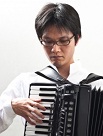 While enrolled in the National College of Music, Yoshiaki Sato began studying the accordion himself. Between 1995 and ’96, he studied in Paris at the C.I.M. Ecole de Jazz, apprenticed under accordionist Daniel Mille. He’s since done work in lives, recordings and stage music, in various places both in Japan and elsewhere, with broad performances that cross through genres. Currently he aims for an original sound that can’t be pinned down to any existing accordion image. For Yuki Kajiura, he played accordion in the Noir, .hack//SIGN, and El Cazador de la Bruja OSTs. He was guest musician and played accordion in Yuki Kajiura live vol #10.
While enrolled in the National College of Music, Yoshiaki Sato began studying the accordion himself. Between 1995 and ’96, he studied in Paris at the C.I.M. Ecole de Jazz, apprenticed under accordionist Daniel Mille. He’s since done work in lives, recordings and stage music, in various places both in Japan and elsewhere, with broad performances that cross through genres. Currently he aims for an original sound that can’t be pinned down to any existing accordion image. For Yuki Kajiura, he played accordion in the Noir, .hack//SIGN, and El Cazador de la Bruja OSTs. He was guest musician and played accordion in Yuki Kajiura live vol #10.
Official Site
Tanooka, Saburo
田ノ岡三郎 Born March 28 (in Chiba-ken)
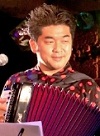 While enrolled in music school, Saburo Tanooka began studying and playing the accordion himself; soon he began to give performances in the subway and on street corners. Around that time, he went to Paris and for a short time studied there, becoming more and more charmed by the accordion as he performed throughout France. After providing an original composition for a CD work, he released his first solo album “Haru no Kizashi”. From there he performed with Miri Watanabe and Kenji Sawada, and steadily broadened his performances. In the spring of 2009, he released his second album “Kaze no Omomuku Mama”, at the same time performing in ensembles, recordings and events with various musicians. Tanooka has played in lives and recordings for KOKIA, performed for various films, TV shows, and OSTs, and also composed and arranged original songs. For Yuki Kajiura, he played accordion in the FictionJunction YUUKA song “Romanesque”.
While enrolled in music school, Saburo Tanooka began studying and playing the accordion himself; soon he began to give performances in the subway and on street corners. Around that time, he went to Paris and for a short time studied there, becoming more and more charmed by the accordion as he performed throughout France. After providing an original composition for a CD work, he released his first solo album “Haru no Kizashi”. From there he performed with Miri Watanabe and Kenji Sawada, and steadily broadened his performances. In the spring of 2009, he released his second album “Kaze no Omomuku Mama”, at the same time performing in ensembles, recordings and events with various musicians. Tanooka has played in lives and recordings for KOKIA, performed for various films, TV shows, and OSTs, and also composed and arranged original songs. For Yuki Kajiura, he played accordion in the FictionJunction YUUKA song “Romanesque”.
Official Site | Official Blog | Twitter account
Acoustic Piano
Kurata, Nobuo
倉田信雄 Born March 5, 1955 (in Kanagawa-ken)
 Nobuo Kurata is a studio musician and music producer. In kindergarten he played the organ, but soon switched to piano and took lessons until the age of 20, after which he enrolled in Nemu Music Institute (now Yamaha Music Institute). So far, he has arranged, produced, and played in both recordings and tours for artists such as Mayumi Nakajima, MISIA, Naomi Chiaki, Kingo Yamada, and Yoko Moriyama. For Yuki Kajiura, he played piano in the Everlasting Songs version of “Mizu no Akashi” and the Tsubasa Chronicles Future Soundscape II.
Nobuo Kurata is a studio musician and music producer. In kindergarten he played the organ, but soon switched to piano and took lessons until the age of 20, after which he enrolled in Nemu Music Institute (now Yamaha Music Institute). So far, he has arranged, produced, and played in both recordings and tours for artists such as Mayumi Nakajima, MISIA, Naomi Chiaki, Kingo Yamada, and Yoko Moriyama. For Yuki Kajiura, he played piano in the Everlasting Songs version of “Mizu no Akashi” and the Tsubasa Chronicles Future Soundscape II.
Twitter account
Matsuda, Masato
松田真人 Born February 25,1956
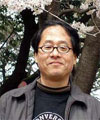 With his mother’s encouragement, he started learning organ at the age of 5 years and, and piano at the age of 6 years. In his elementary school years, he fell under the spell of popular songs. King Crimson, Elton John, Santana, and Chick Corea influenced him in his high school years. In his college years, he got seriously involved with classical music . After entering Kunitachi College of Music, he was immersed in composing. After graduation he taught music in Shimura High School in Tokyo, but retired after a year and started professional musician career after joining an Inaba Akira’s concert tour. In 1985 he joined “Paradigm Shift”, and in 1992, “Paradox”. He has so far participated in concerts and recordings of numerous artists such as Kisugi Takao, Yamashita Tatsuro, Tanimura Shinji, Bob Sakuma and so on. From 1999, he has performed piano solo concerts, which have been well received. Currently he energetically does both studio works and supporting of live performances. Between 2001 and 2007, he released 4 piano solo albums: “Kokoro Tokimeite”, “Story of Romantic Melodies”, “Requiem” and “Atatakana Jikan”. With Yuki Kajiura he had played acoustic piano for many of her soundtrack and j-pop works, among them are Fiction, See-Saw “I have a dream”, Saeko Chiba’s album ‘Everything’, FictionJunction and recently in Kalafina music.
With his mother’s encouragement, he started learning organ at the age of 5 years and, and piano at the age of 6 years. In his elementary school years, he fell under the spell of popular songs. King Crimson, Elton John, Santana, and Chick Corea influenced him in his high school years. In his college years, he got seriously involved with classical music . After entering Kunitachi College of Music, he was immersed in composing. After graduation he taught music in Shimura High School in Tokyo, but retired after a year and started professional musician career after joining an Inaba Akira’s concert tour. In 1985 he joined “Paradigm Shift”, and in 1992, “Paradox”. He has so far participated in concerts and recordings of numerous artists such as Kisugi Takao, Yamashita Tatsuro, Tanimura Shinji, Bob Sakuma and so on. From 1999, he has performed piano solo concerts, which have been well received. Currently he energetically does both studio works and supporting of live performances. Between 2001 and 2007, he released 4 piano solo albums: “Kokoro Tokimeite”, “Story of Romantic Melodies”, “Requiem” and “Atatakana Jikan”. With Yuki Kajiura he had played acoustic piano for many of her soundtrack and j-pop works, among them are Fiction, See-Saw “I have a dream”, Saeko Chiba’s album ‘Everything’, FictionJunction and recently in Kalafina music.
Official Site
Mino, Haruki
美野春樹 Birthdate unknown
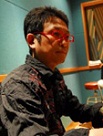 Haruki Mino graduated as a composer from the Tokyo College of the Arts, and performed in the studio on piano and keyboard. He has done CM, TV and animation music, and other various works. Also, he formed the “Haruki Mino Trio” jazz group. Recently, he’s been working zealously on classic chamber music, producing concerts with unique programs, and positively tackling his performances; also, he’s active in concert support, stage work, and TV music for Yoshi Kahou. For Yuki Kajiura, he played in the Kara no Kyoukai Music Collection and the Puella Magi Madoka Magica OST.
Haruki Mino graduated as a composer from the Tokyo College of the Arts, and performed in the studio on piano and keyboard. He has done CM, TV and animation music, and other various works. Also, he formed the “Haruki Mino Trio” jazz group. Recently, he’s been working zealously on classic chamber music, producing concerts with unique programs, and positively tackling his performances; also, he’s active in concert support, stage work, and TV music for Yoshi Kahou. For Yuki Kajiura, he played in the Kara no Kyoukai Music Collection and the Puella Magi Madoka Magica OST.
Keyboard
Kobayashi, Tetsuya
小林哲也 Born August 17, 1980 (in Nagano-ken)
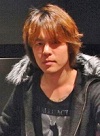 Tetsuya Kobayashi has worked in lives and recording for artists like Akiko Okumura, Junpei Kokubo, Nana Kitaide, YUKI, Nao Nagazawa, and Yoko Yazawa. Also, he’s composed for Smash Pink Noise, Buono!, AKB48, Rie Tanaka, and Asami Yanagi. Arranging and TV/PV work is also part of his repertoire. For Yuki Kajiura, he played keyboard in the Saeko Chiba albums “Everything” and “Melody”.
Tetsuya Kobayashi has worked in lives and recording for artists like Akiko Okumura, Junpei Kokubo, Nana Kitaide, YUKI, Nao Nagazawa, and Yoko Yazawa. Also, he’s composed for Smash Pink Noise, Buono!, AKB48, Rie Tanaka, and Asami Yanagi. Arranging and TV/PV work is also part of his repertoire. For Yuki Kajiura, he played keyboard in the Saeko Chiba albums “Everything” and “Melody”.
Official Blog
Sakurada, Hirotaka ☆
櫻田泰啓 Birthdate unknown
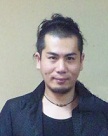 At 3 years old, Hirotaka Sakurada began playing the Electone; when he was 10 he wrote the song used for figure-skater Itou Midori in the Calgary Olympics, and soon became a local celebrity. At the same time he began the piano too, and from senior high school on focused on it. When he was 18 he moved to Tokyo, and from 20 onward, he became a piano support musician, working also as an arranger. Presently, he’s adopted elements of funk, and is very active in various artists’ recordings and lives. For Yuki Kajiura, he’s played the keyboard in various Kalafina lives, including the Red Moon and After Eden DVD lives.
At 3 years old, Hirotaka Sakurada began playing the Electone; when he was 10 he wrote the song used for figure-skater Itou Midori in the Calgary Olympics, and soon became a local celebrity. At the same time he began the piano too, and from senior high school on focused on it. When he was 18 he moved to Tokyo, and from 20 onward, he became a piano support musician, working also as an arranger. Presently, he’s adopted elements of funk, and is very active in various artists’ recordings and lives. For Yuki Kajiura, he’s played the keyboard in various Kalafina lives, including the Red Moon and After Eden DVD lives.
Twitter account
Sato, Tatsuya ☆
佐藤達哉 [A.K.A: 佐藤”darling”達也 (Sato “darling” Tatsuya)] Born March 27,1964
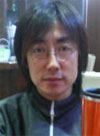 Tatsuya Sato is a keyboardist who originated from the Yamagata prefecture. He mainly participate in live events playing the keyboard, while occasionally taking part in studio music recording. He is the main supporting member of one of Japan’s rock bands known as LINDBERG, where he is nicknamed Sato “darling” Tatsuya. Aside that, he is actively associated with aiko, a female Japanese singer-songwriter, whom Tatsuya actively supports during her live tour. With her he earned his other nickname, Tatsu Tatsu. He has also supported many others such as Cheap Purple, Ootomo Yasuhira, Asaoka Yuuya, etc (possibly having much more nicknames as well). While he has never taken part in recording with Yuki (since she is the sole keyboardist for every music she produces), he has been playing the keyboard in a considerable amount of Kalafina lives.
Tatsuya Sato is a keyboardist who originated from the Yamagata prefecture. He mainly participate in live events playing the keyboard, while occasionally taking part in studio music recording. He is the main supporting member of one of Japan’s rock bands known as LINDBERG, where he is nicknamed Sato “darling” Tatsuya. Aside that, he is actively associated with aiko, a female Japanese singer-songwriter, whom Tatsuya actively supports during her live tour. With her he earned his other nickname, Tatsu Tatsu. He has also supported many others such as Cheap Purple, Ootomo Yasuhira, Asaoka Yuuya, etc (possibly having much more nicknames as well). While he has never taken part in recording with Yuki (since she is the sole keyboardist for every music she produces), he has been playing the keyboard in a considerable amount of Kalafina lives.
Twitter account